Chemistry and Chemists № 3 2025
Journal of Chemists-Enthusiasts
| Content | Chemistry experiments - video | Physics experiments - video | Home Page - Chemistry and Chemists |
|
Chemistry and Chemists № 3 2025 Journal of Chemists-Enthusiasts |
Reaction of Sodium Thiosulfate with Iron(III) Salts - pt.3, 4 Chemist |
|
Having noticed a mistake in the text, allocate it and press Ctrl-Enter
Reaction of Sodium Thiosulfate with Iron(III) Chloride - Part 3
In the second experiment, I increased the amounts of the reagents tenfold. I dissolved 6.12 g of sodium thiosulfate in 90 mL of distilled water in a flask. I weighed out 10.00 g of the iron(III) chloride solution from the jar, but this time I did not dilute it with water.
Реакция тиосульфата натрия с хлоридом железа(III) - Часть 3 I added all the iron(III) chloride at once to the sodium thiosulfate solution. The liquid in the flask turned dark purple, almost black. Gradually, the reaction mixture began to lighten, turning first brown and then yellow. It was unclear which reagent was in excess, since I had used the entire volume of both solutions at once. A more practical approach was to add the iron(III) chloride in small portions. Therefore, I weighed 1.13 g of sodium thiosulfate in a flask and dissolved it in 100 mL of distilled water. I then added a small portion of the iron(III) chloride solution and shook the flask. A dark purple color appeared, which gradually faded until the solution turned yellow. Adding another portion of ferric chloride and shaking again produced the same effect: the dark purple color appeared, then slowly faded to yellow. I repeated this procedure seven times, obtaining the same result each time. After the eighth addition of ferric chloride, the solution no longer turned dark purple, indicating that all the sodium thiosulfate had been consumed. |
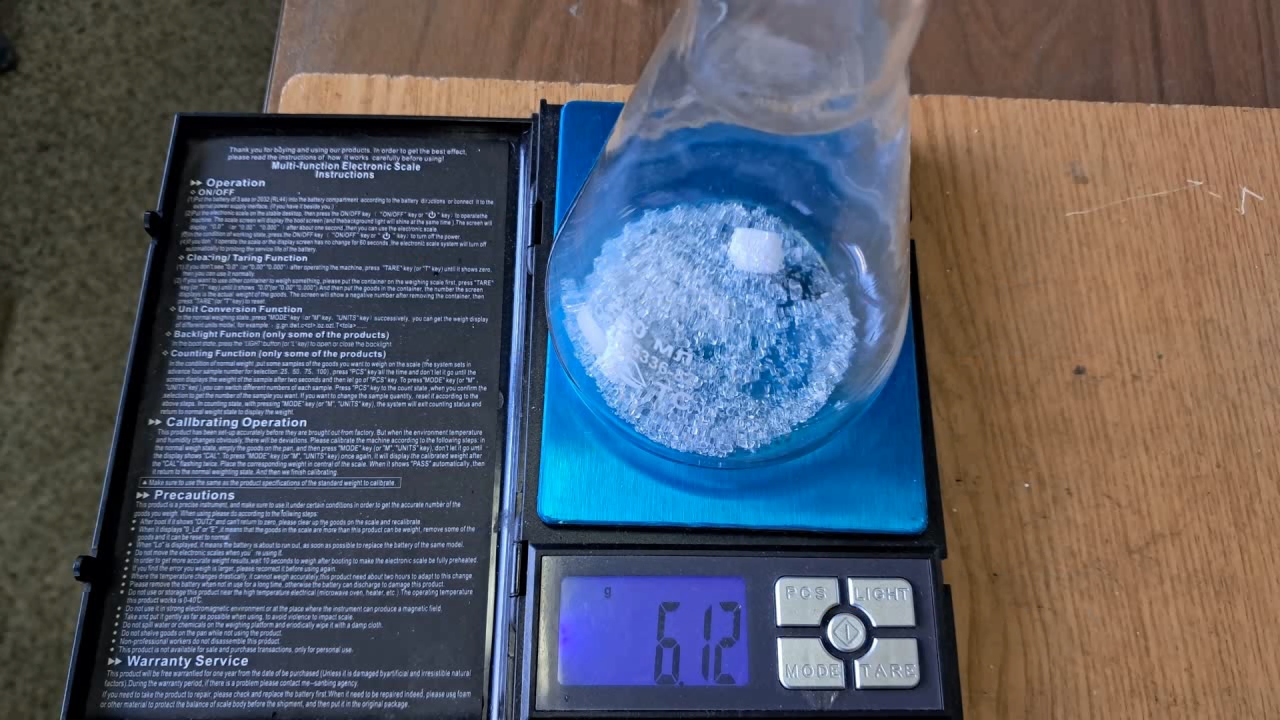
Reaction of Sodium Thiosulfate with Iron(III) Chloride |
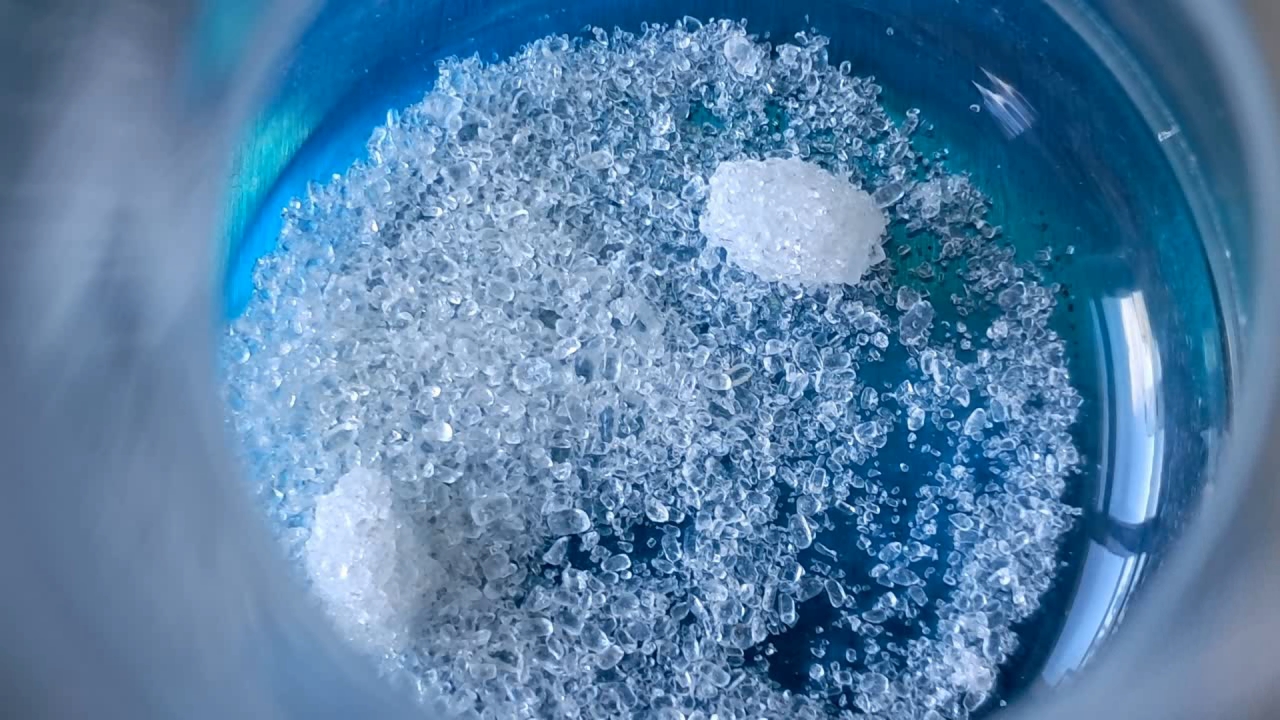
|
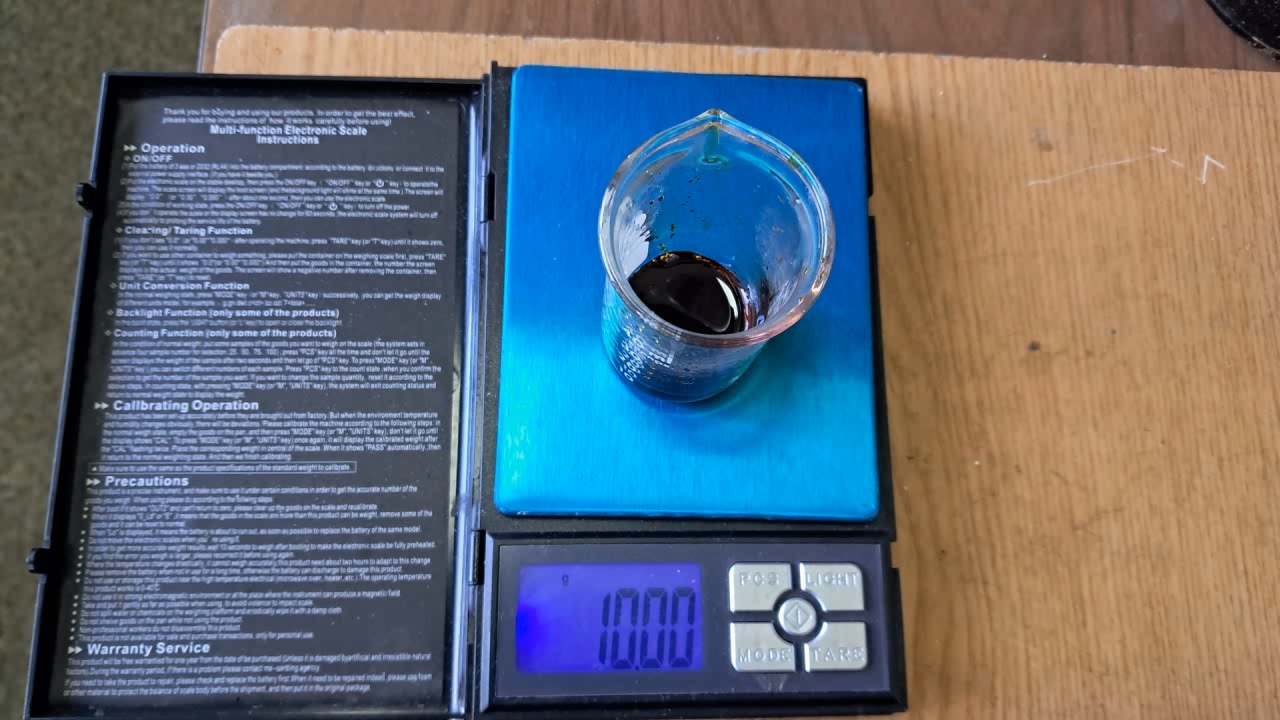
|
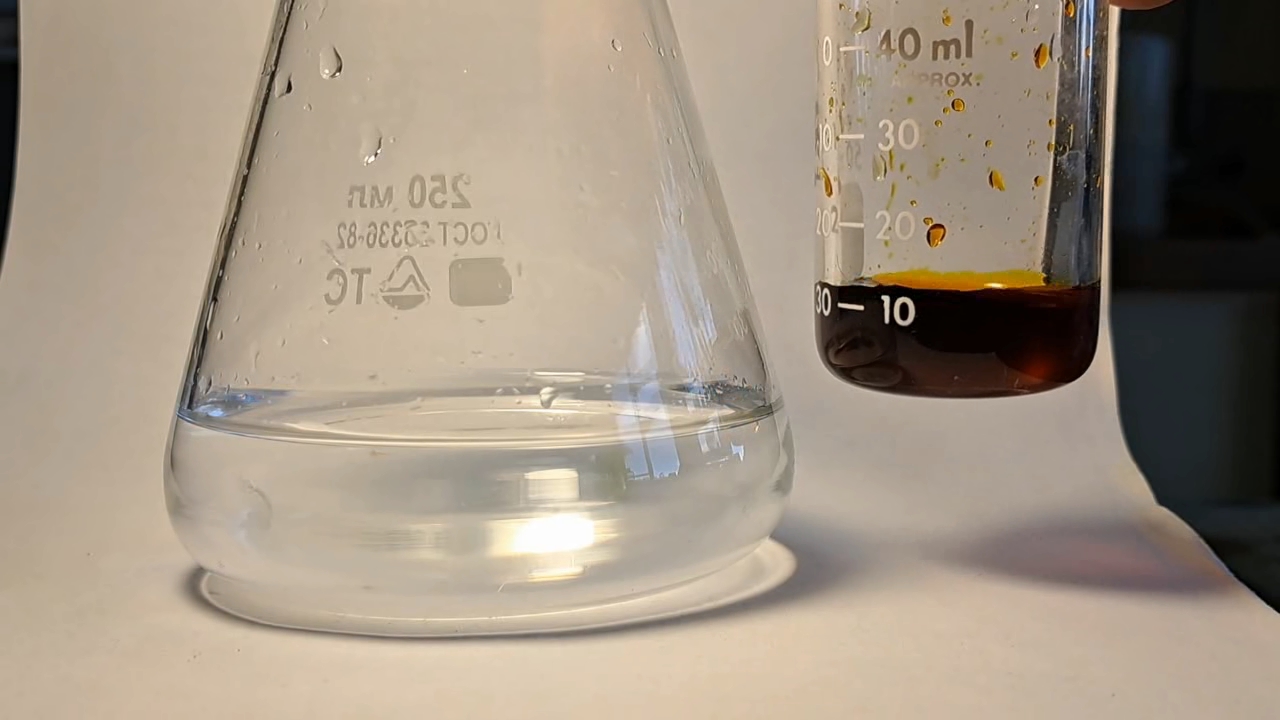
|
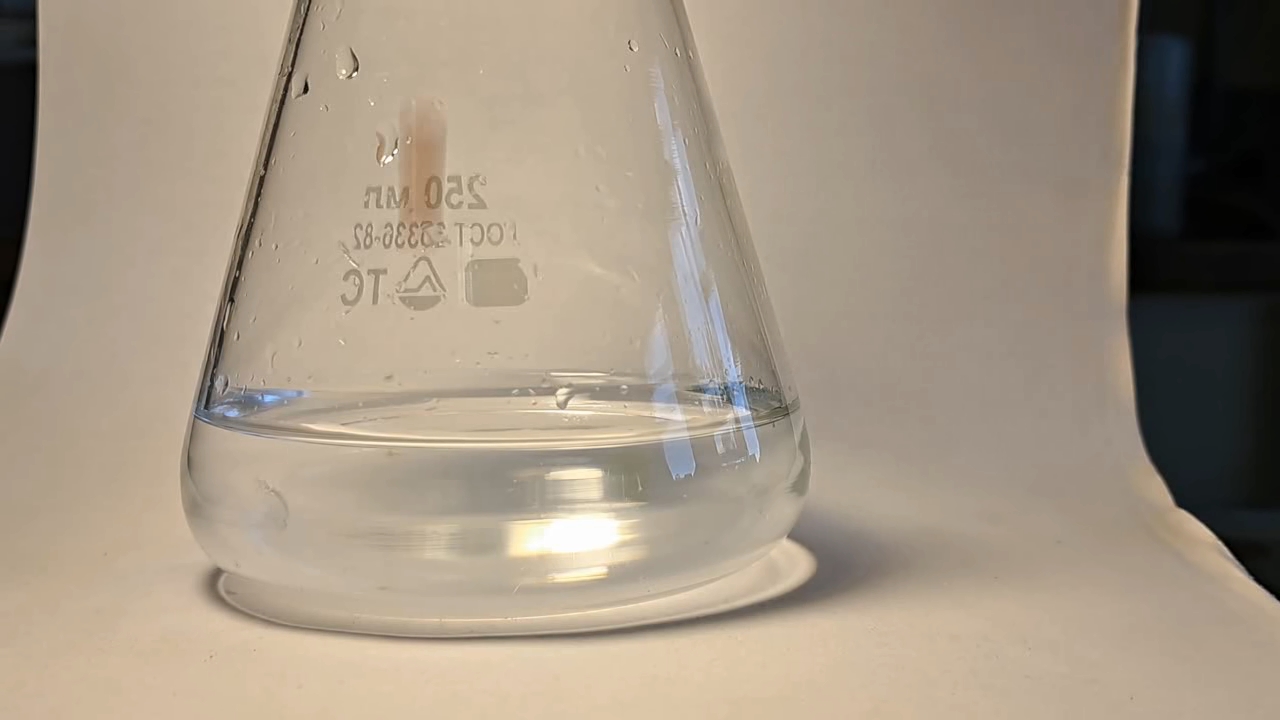
|
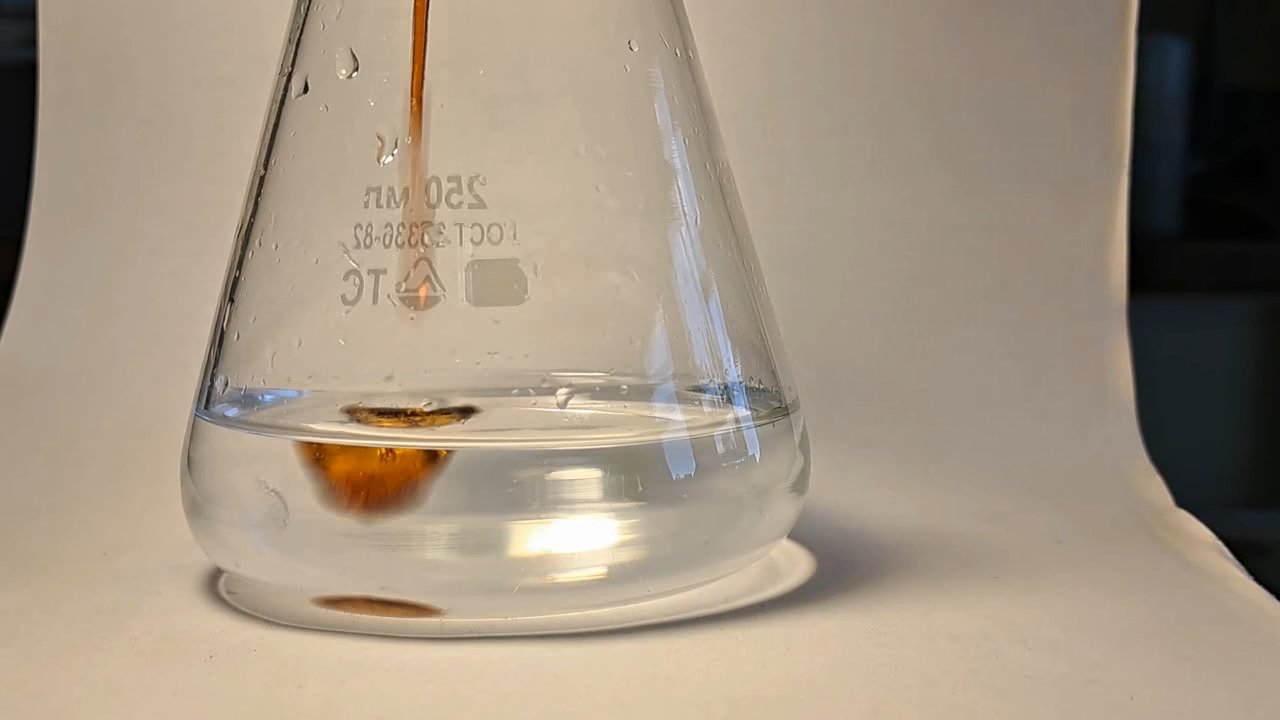
|
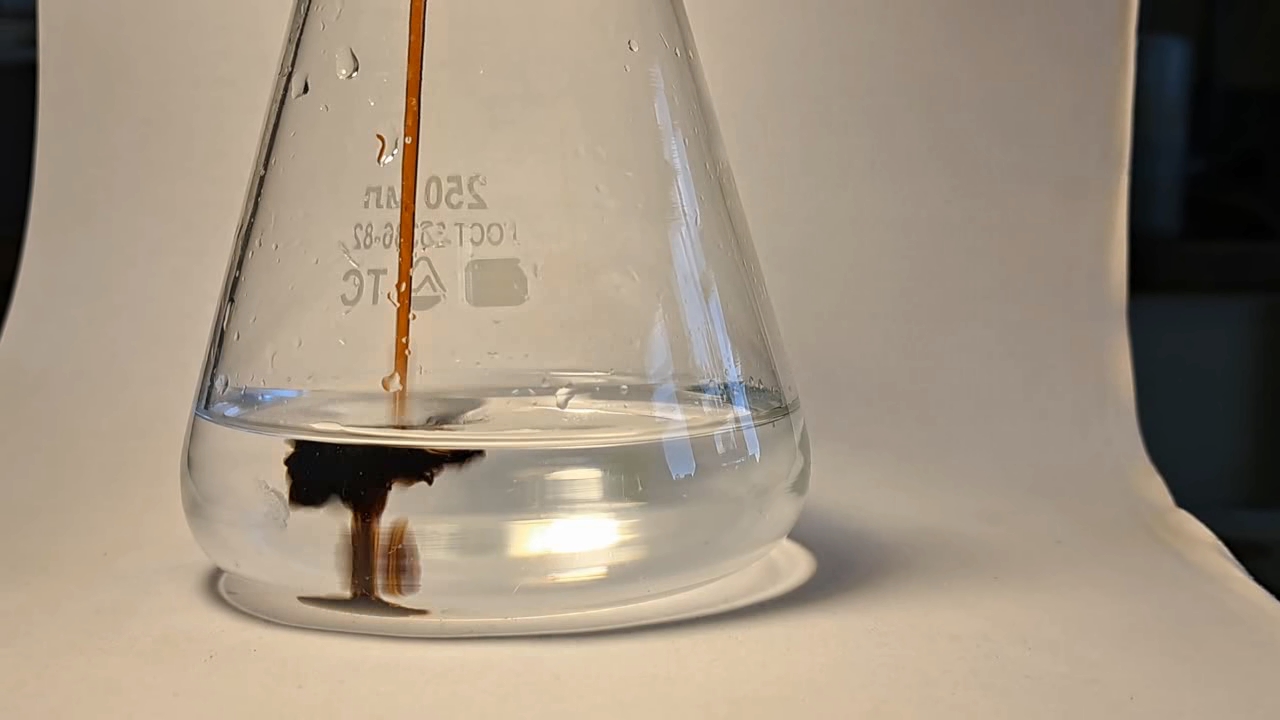
|
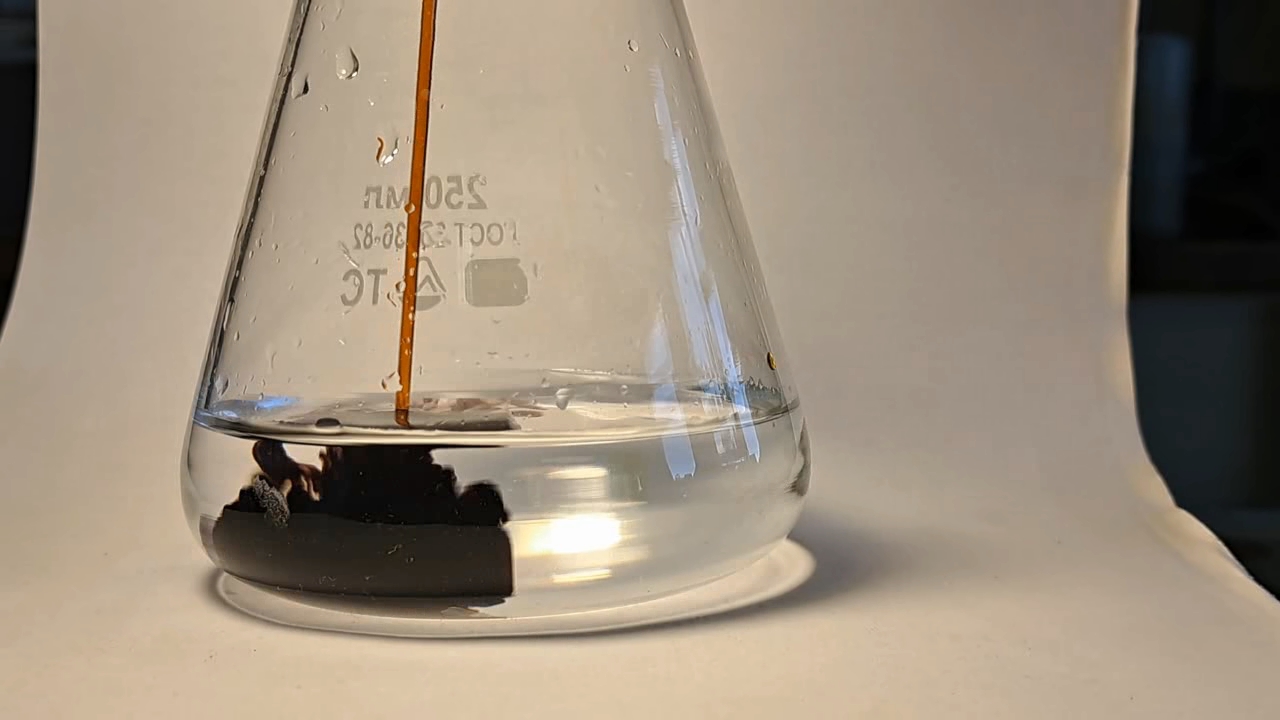
|
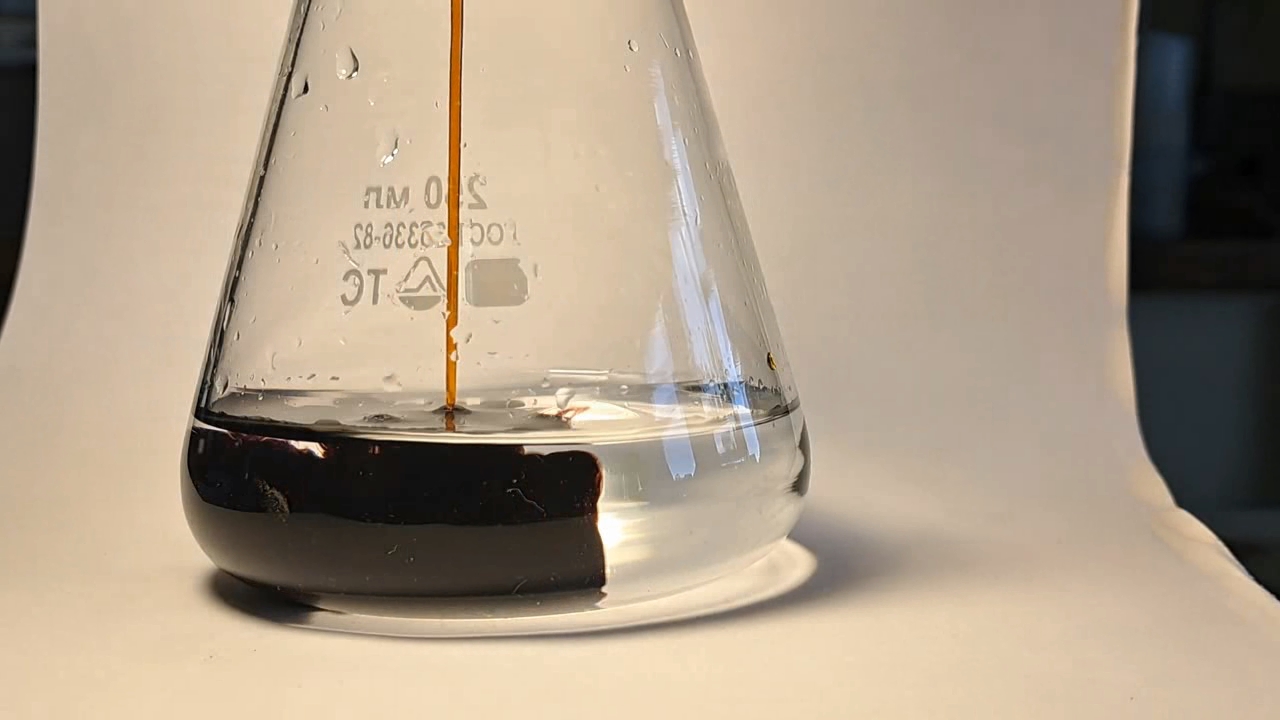
|
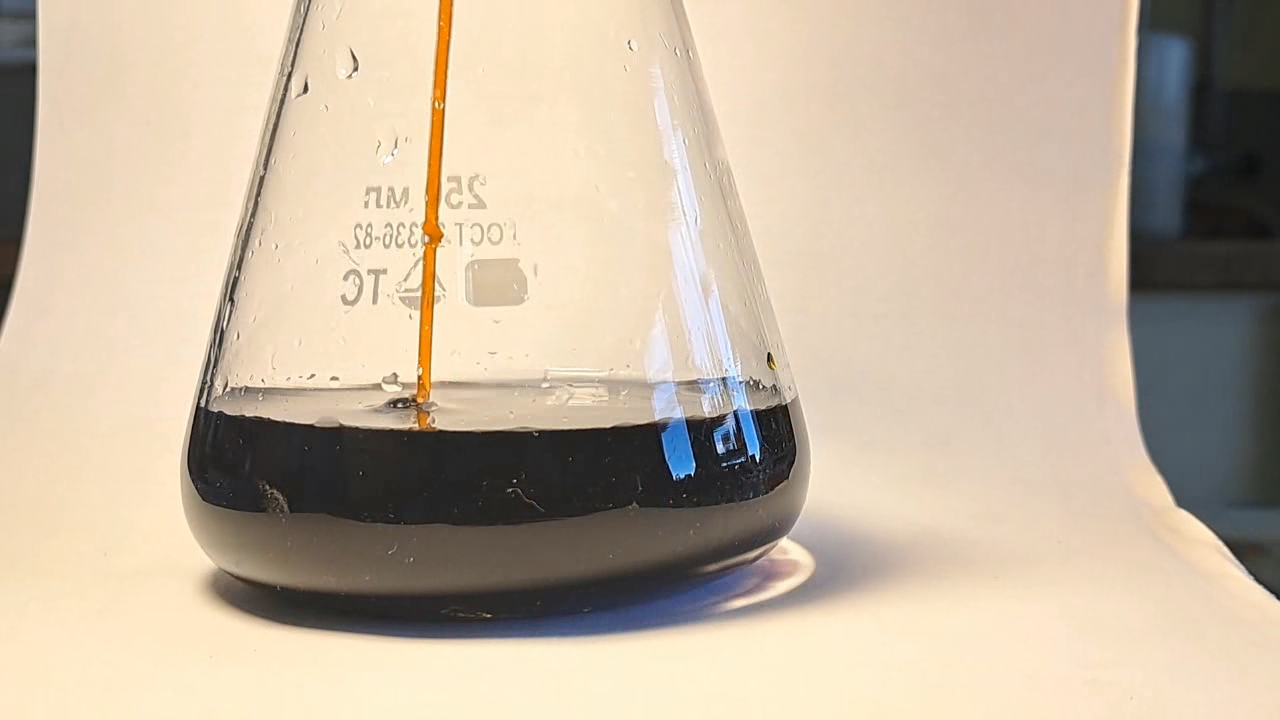
|
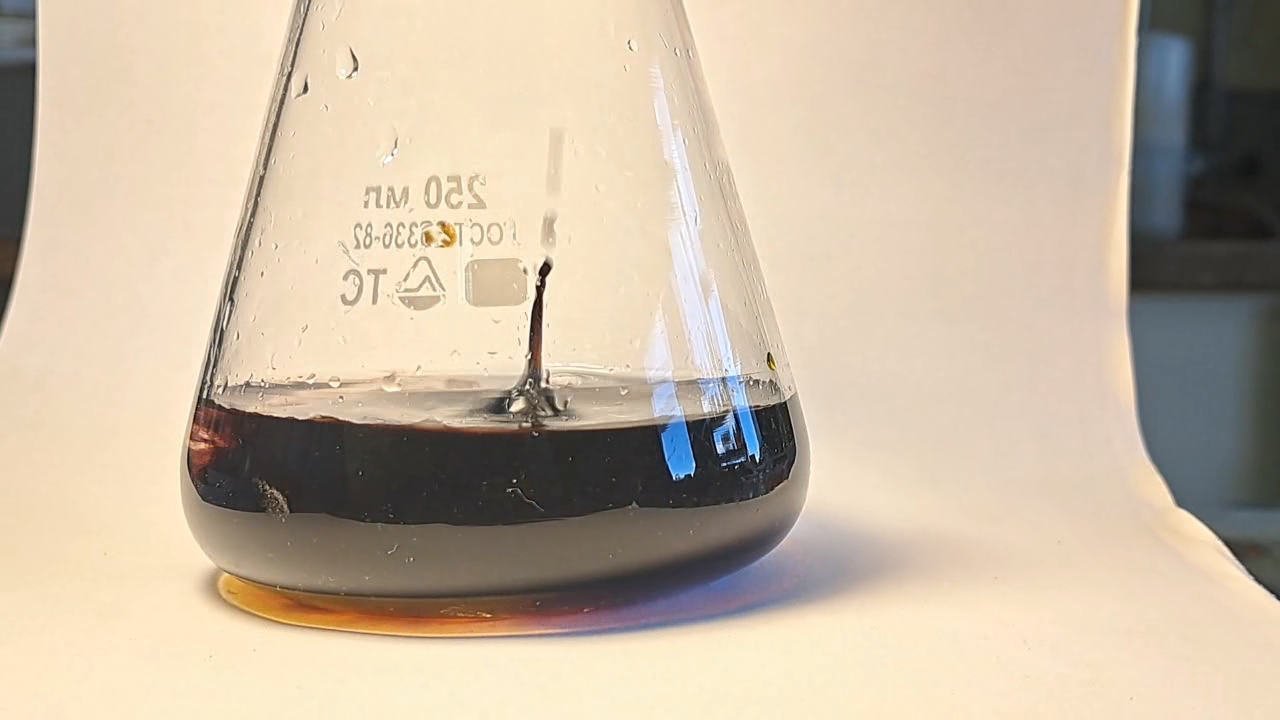
|
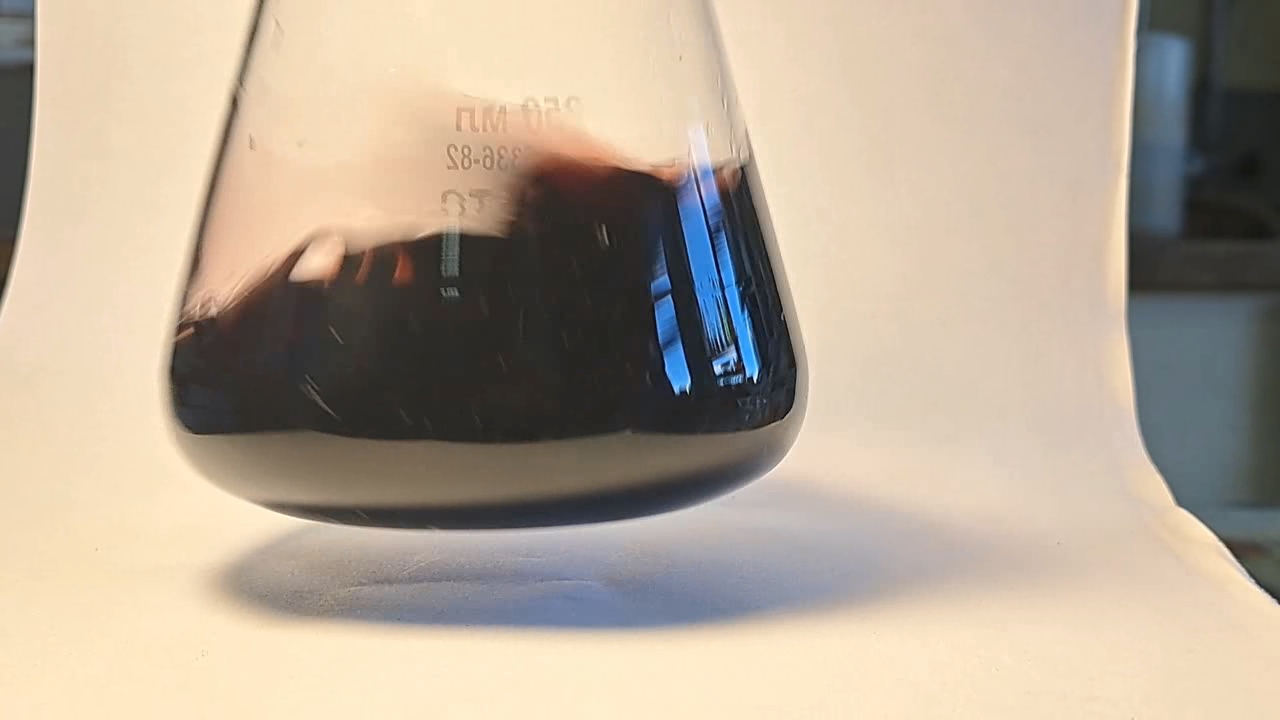
|
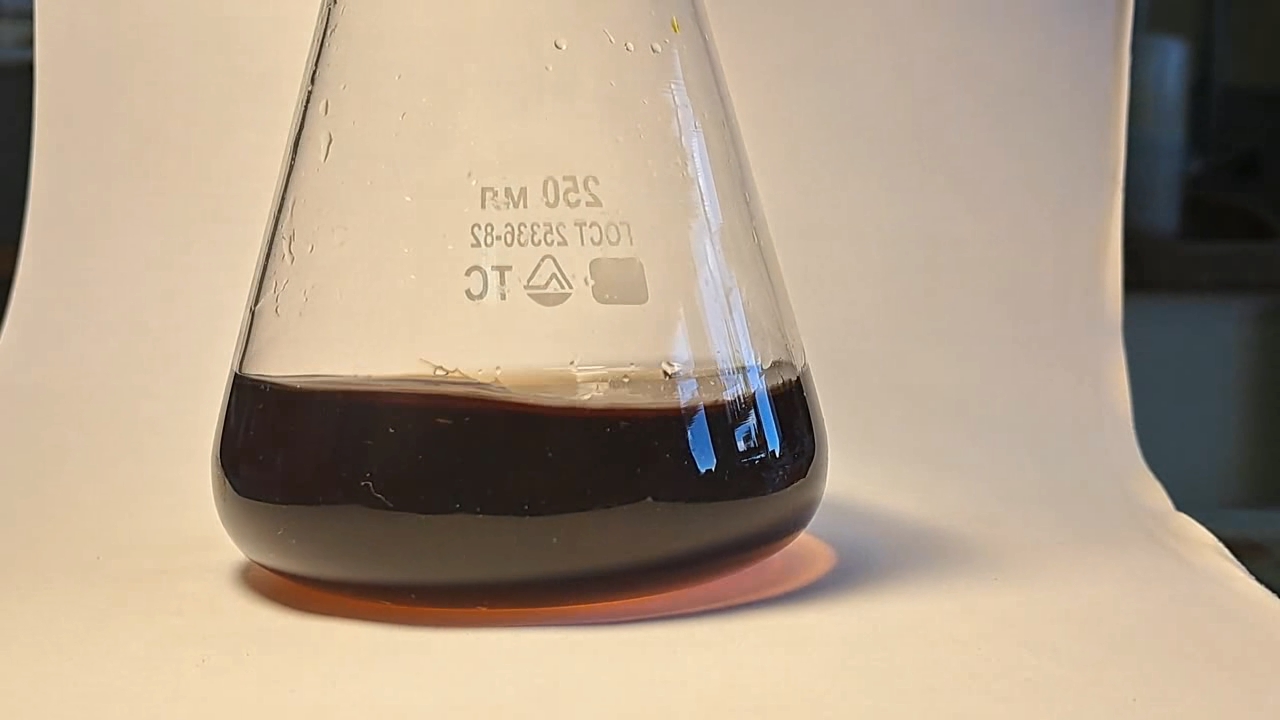
|
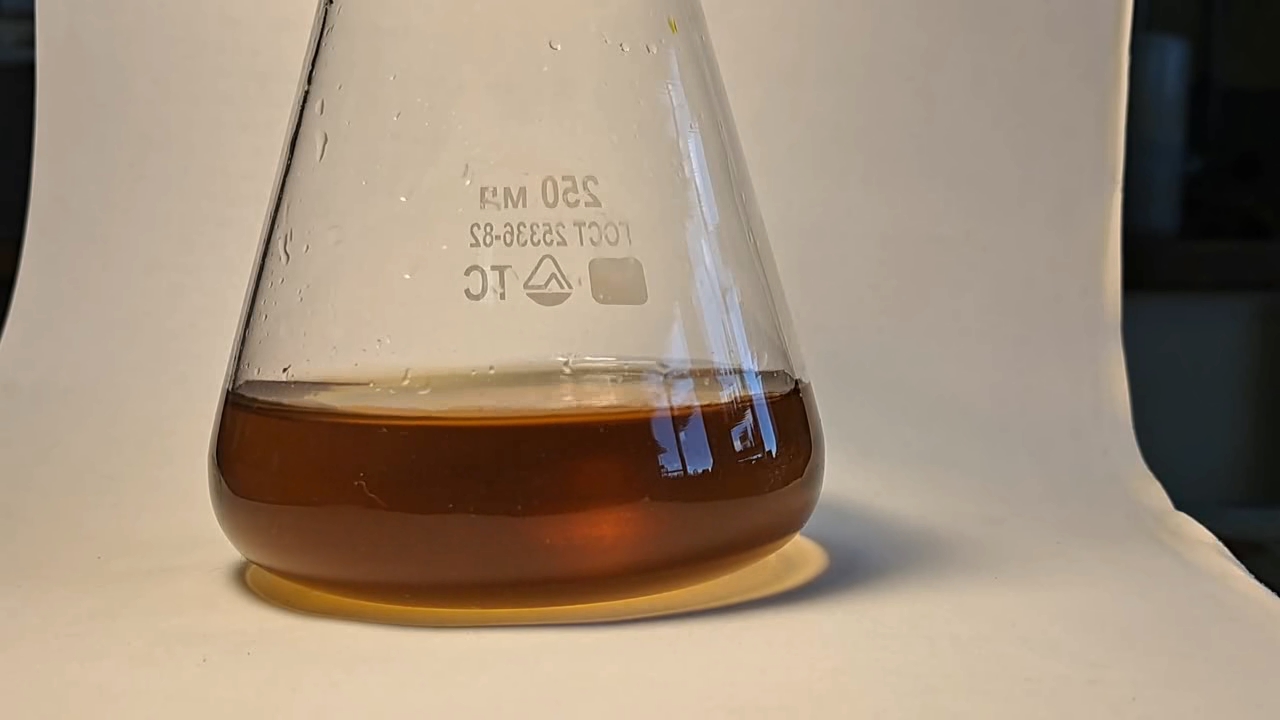
|
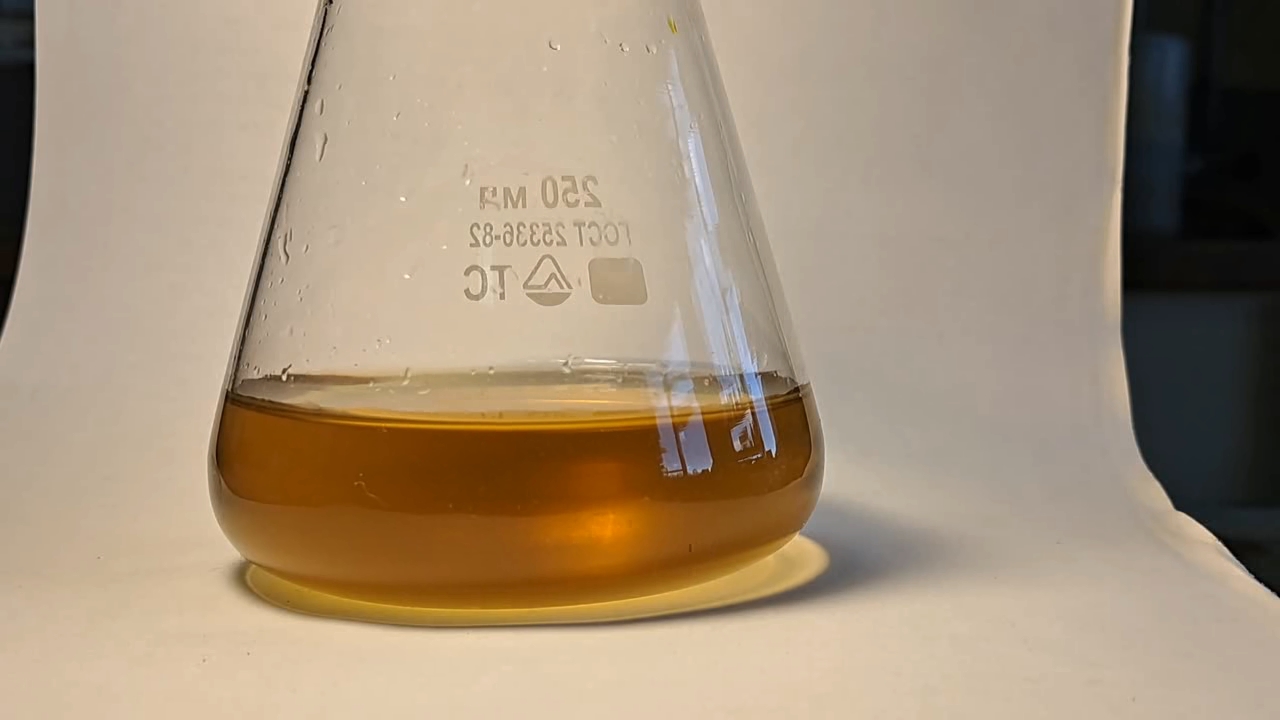
|
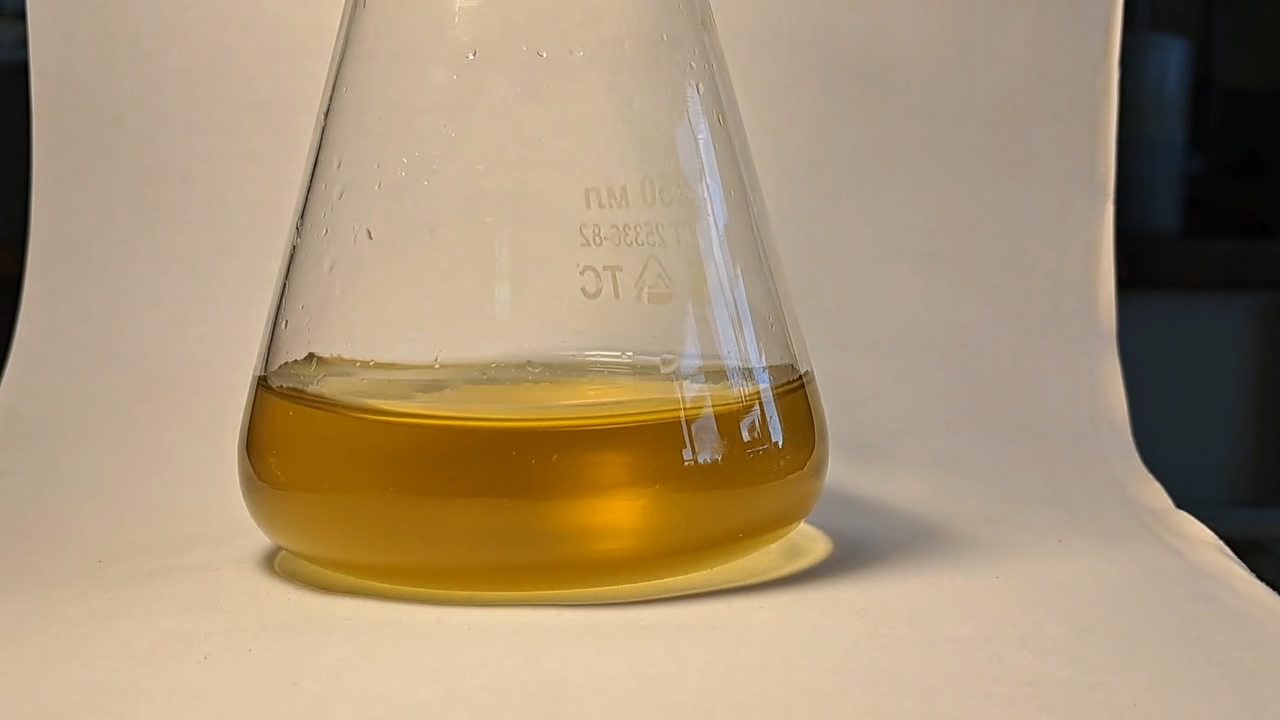
|
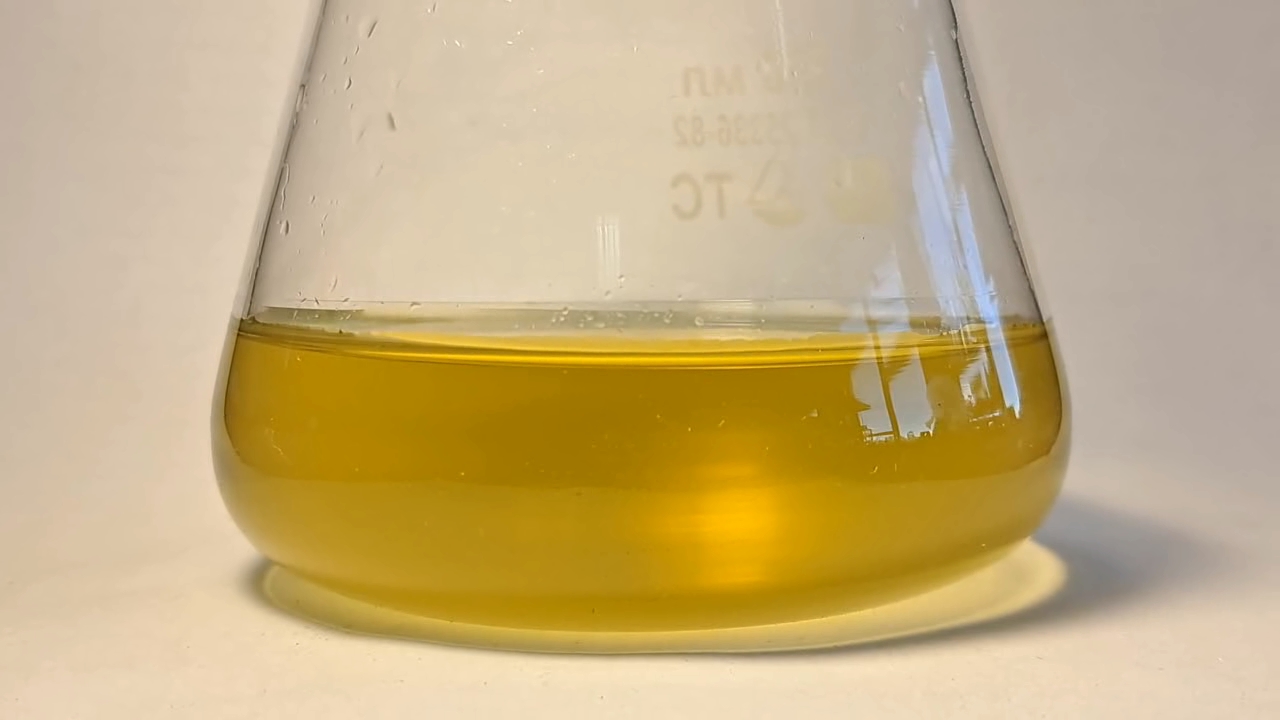
|
|
Having noticed a mistake in the text, allocate it and press Ctrl-Enter
Direct and Inverse Reagents Addition Order - Part 4
To improve mixing, I conducted the following experiments using a magnetic stirrer. This method is more convenient than stirring the reaction mixture manually or relying on the natural diffusion of the reactants.
Прямой и обратный порядок прибавления реагентов - Часть 4 I poured 400 mL of distilled water into a beaker and placed it on the magnetic stirrer. With vigorous stirring, I dissolved 2.02 g of sodium thiosulfate in the water. Then I added a solution of iron(III) chloride. A dark purple color appeared immediately, which slowly faded over time until the solution became light yellow. This color transition took several tens of seconds. After the solution turned pale, I added more iron(III) chloride. A new intense color appeared again, which gradually faded. I repeated this procedure several times. Depending on the amount of Fe(III) added, a purple color of varying intensity was observed, after which the solution gradually lightened to yellow or light brown. Eventually, the next portion of the iron(III) chloride solution no longer produced a purple color, as all the thiosulfate had been consumed. At this point, an excess of Fe(III) cations was present in the solution, since all the sodium thiosulfate had already reacted. Further additions of iron(III) chloride, of course, no longer produced the purple coloration of the complex. In previous experiments, I had stopped at this stage. However, this time I decided to continue the experiment, reversing the order of reagent addition. I added a few grams of solid sodium thiosulfate to the reaction mixture. The solution turned black (the dark purple color was indistinguishable because of its intensity), and then gradually faded, as before, until the solution became light brown. Thus, the inverse order of reagent addition also led to the formation and subsequent decomposition of the complex. Later, I found that it was best to dissolve sodium thiosulfate in water before adding it to the reaction mixture - this noticeably accelerated the appearance of the black color. Finally, I added a small amount of black tea to the reaction mixture. Tannins are known to form intensely colored complexes with both iron(III) and iron(II) salts. The solution turned dark greenish-yellow. I am unable to explain this coloration, since the complexes of iron cations with black tea tannins are typically dark violet or black. |
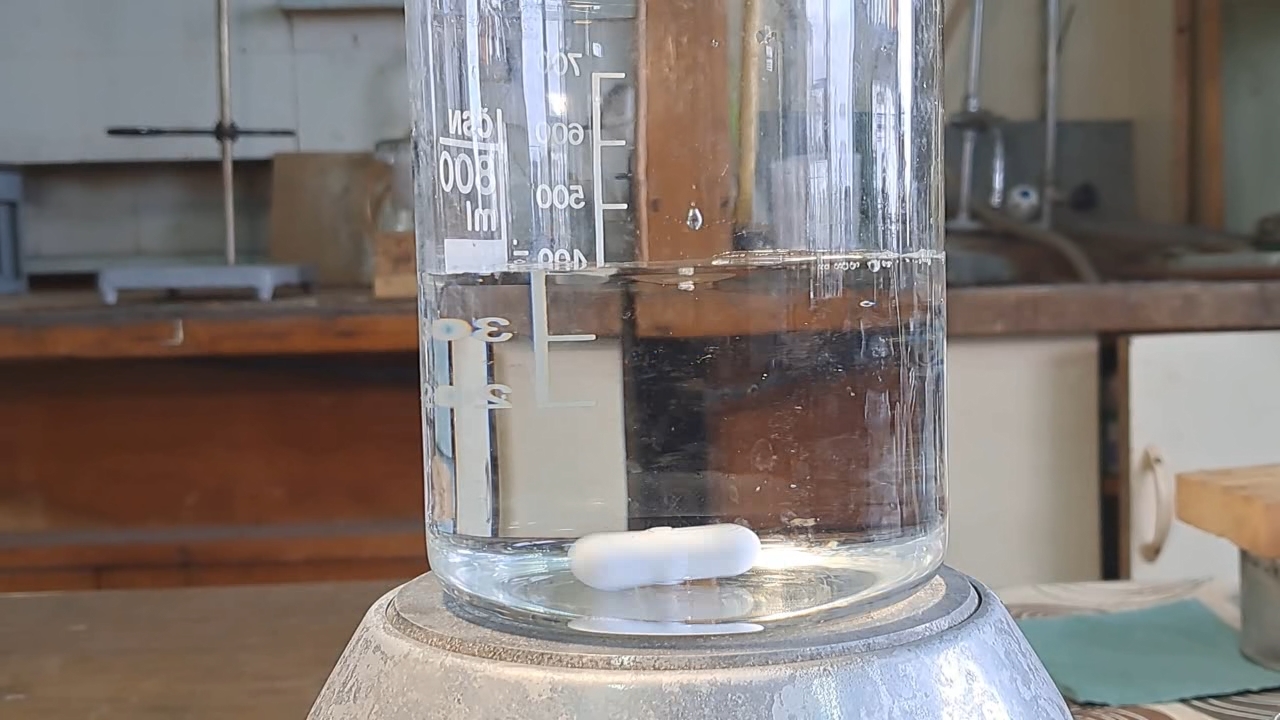
Reaction of Sodium Thiosulfate with Iron(III) Chloride |
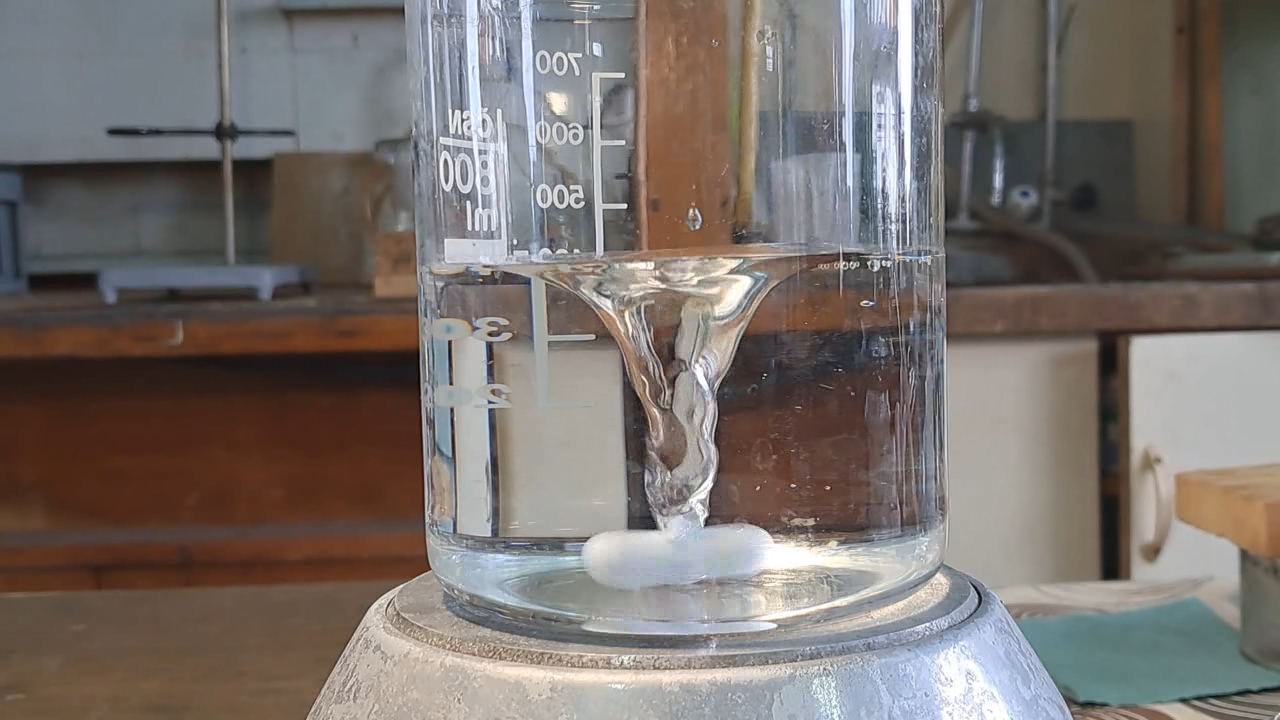
|
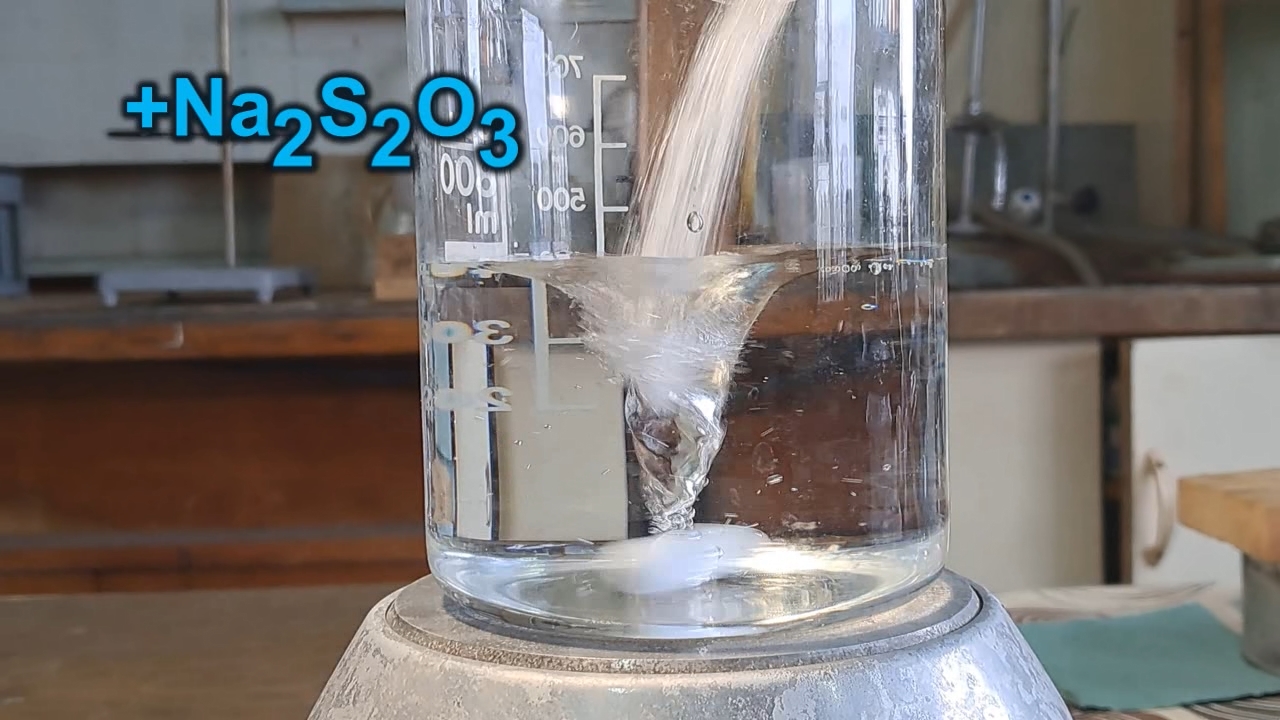
|
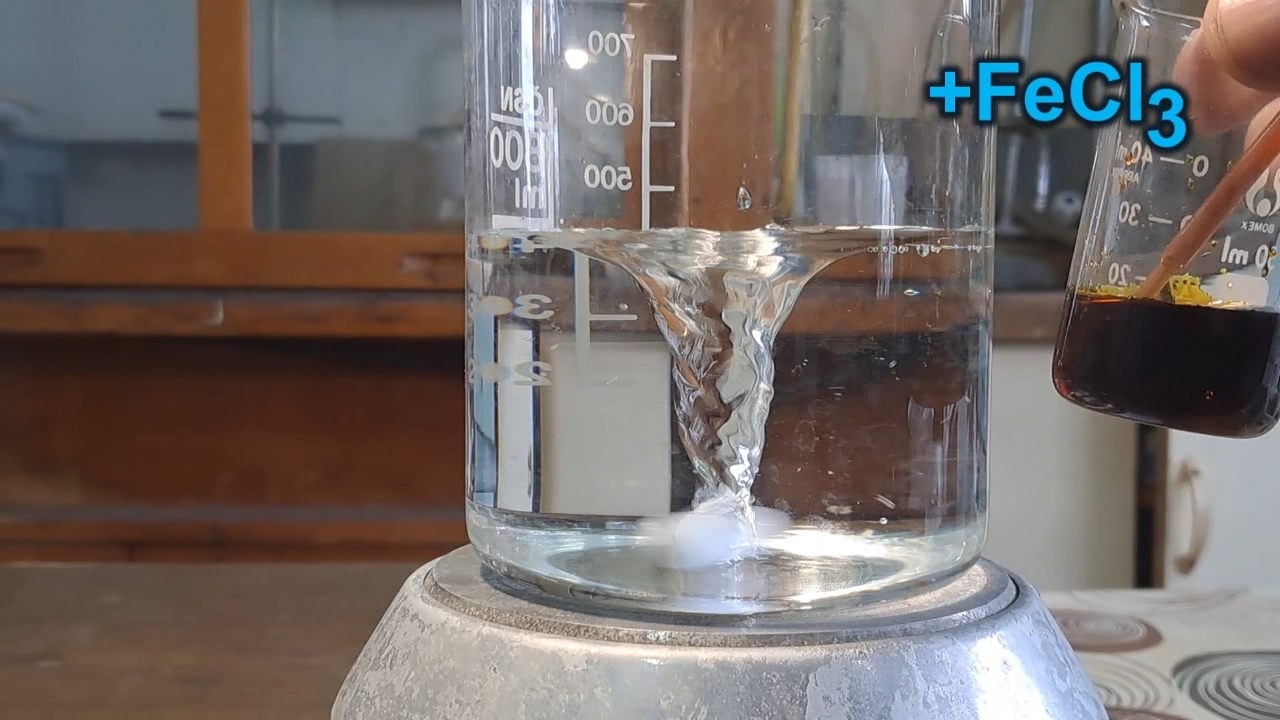
|
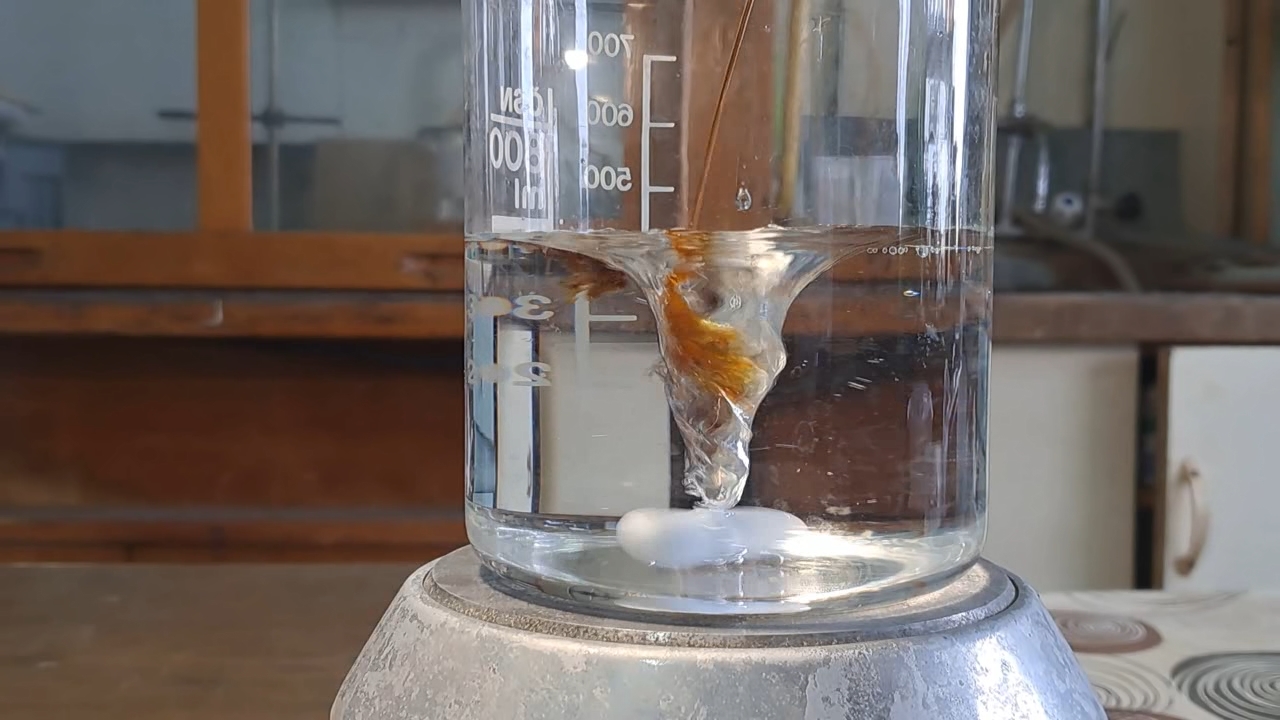
|
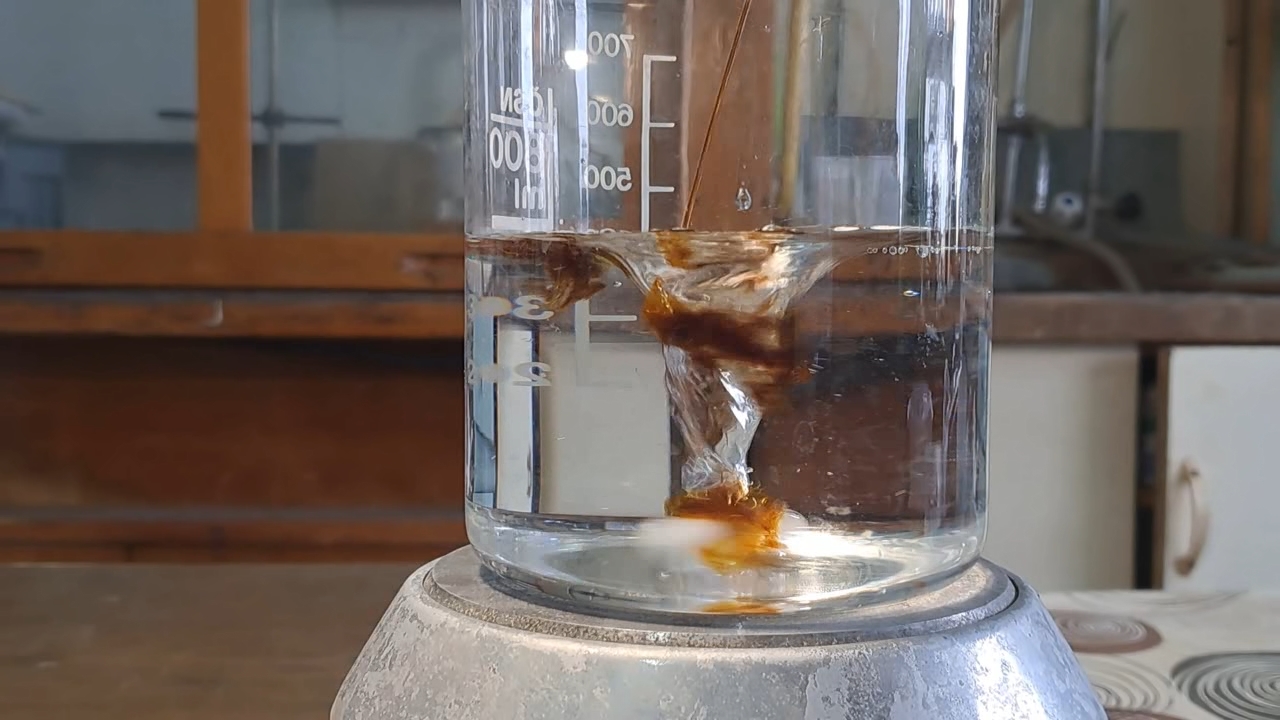
|
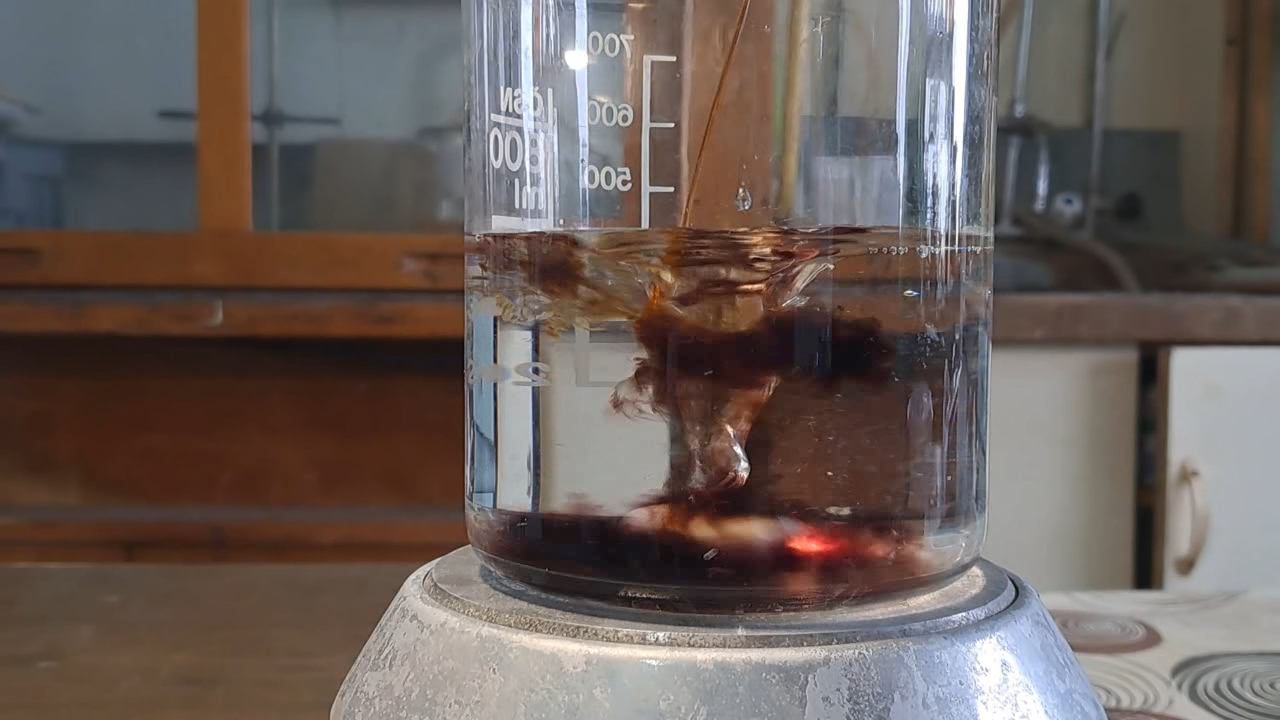
|
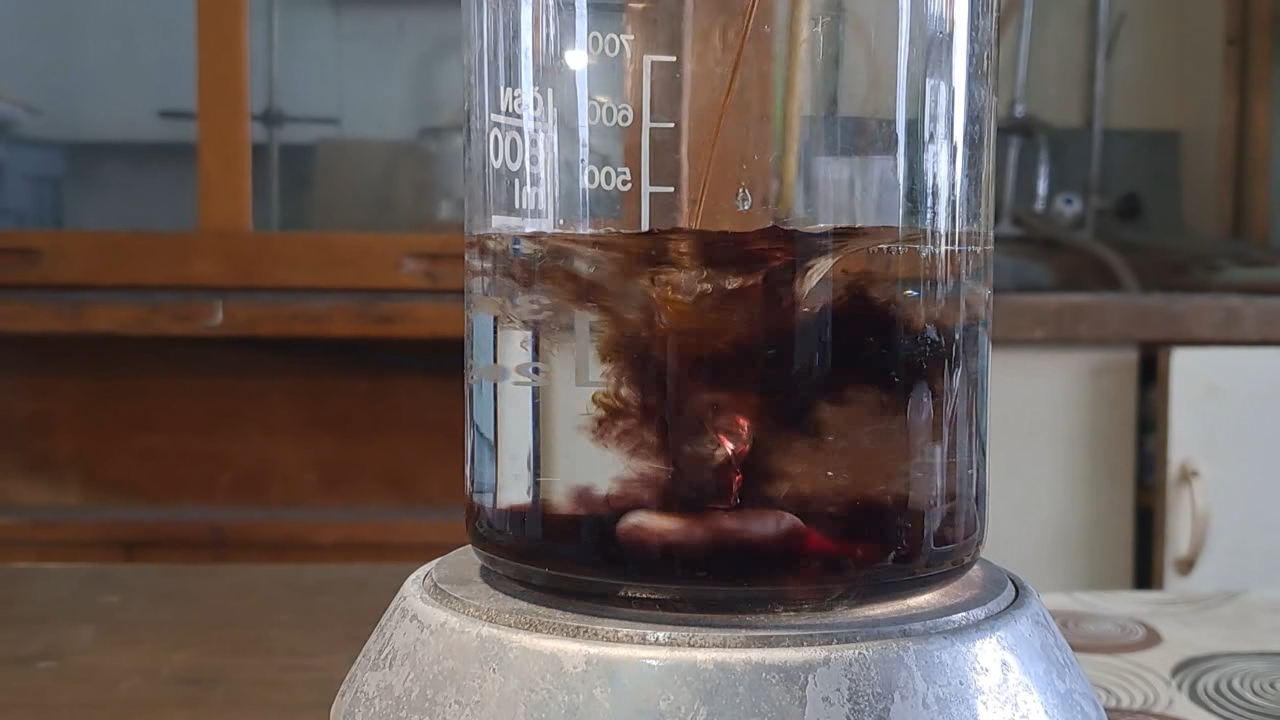
|
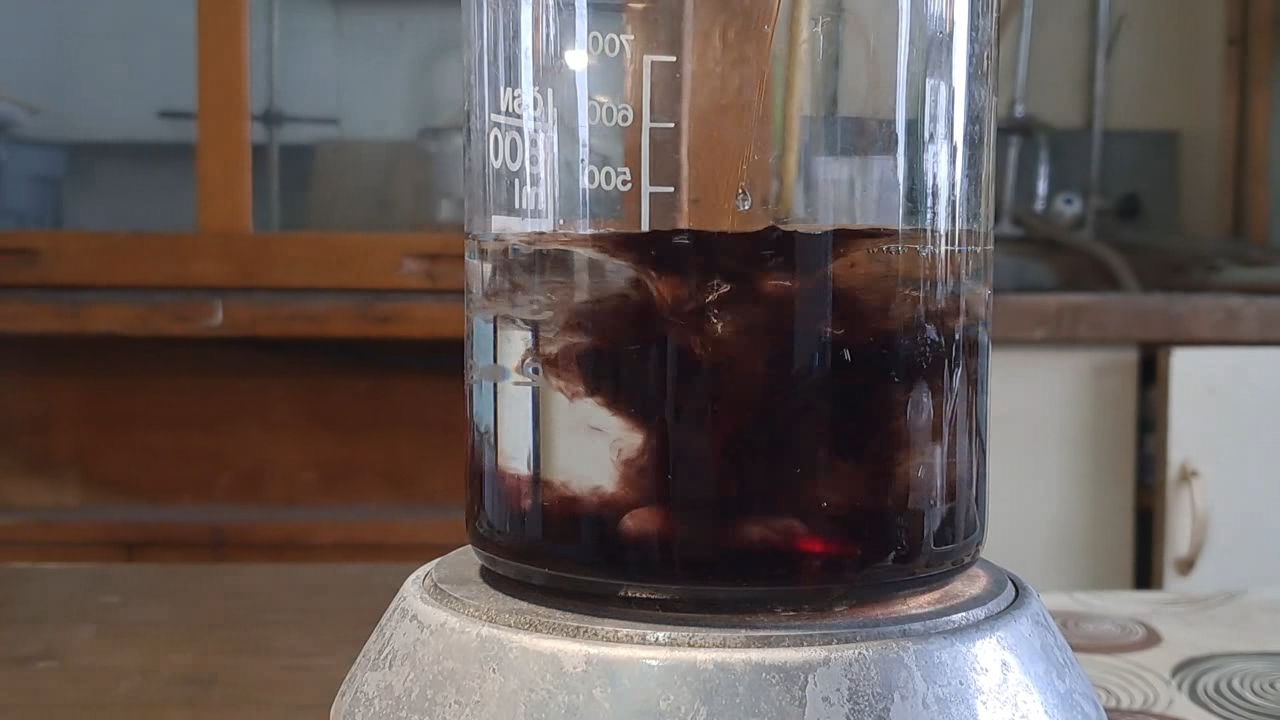
|
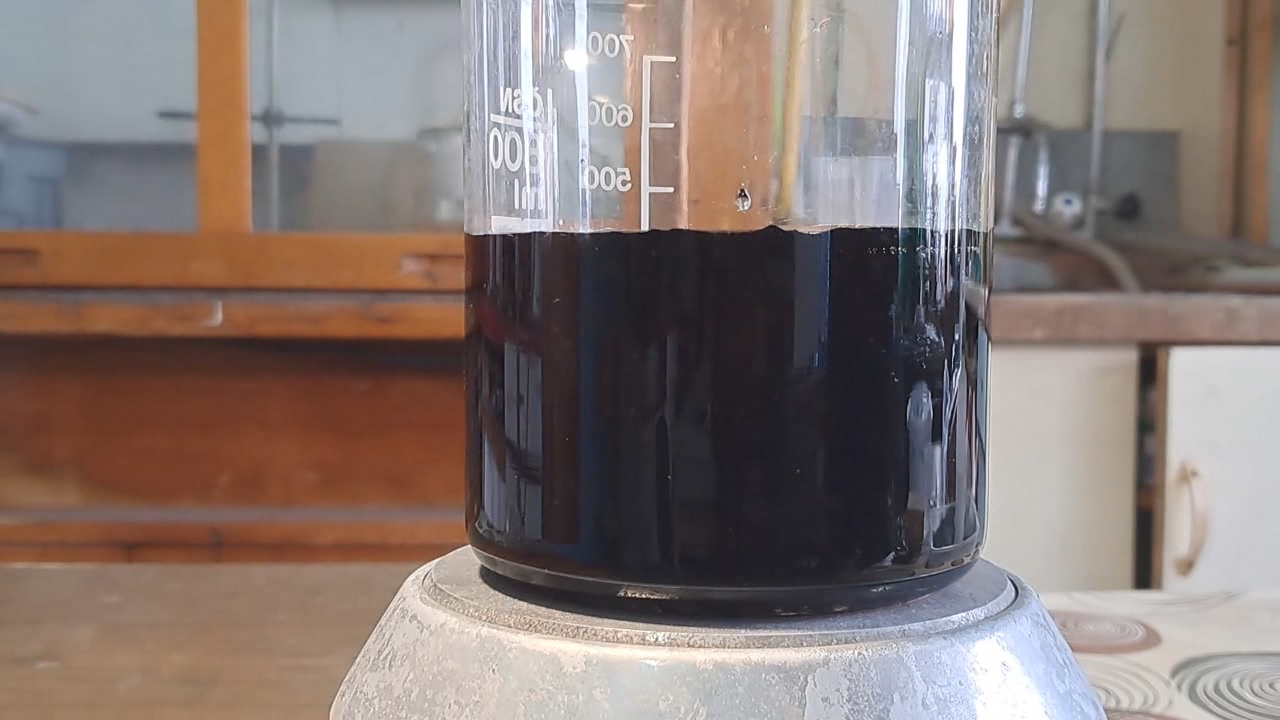
|
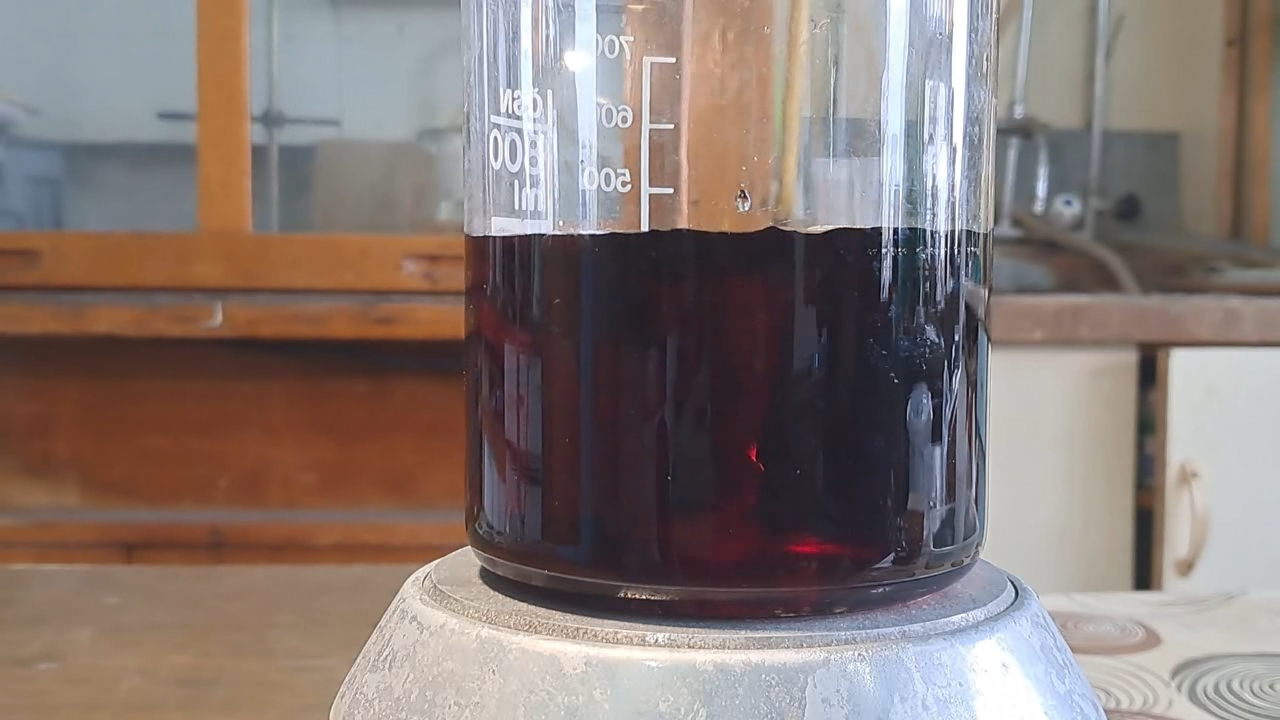
|
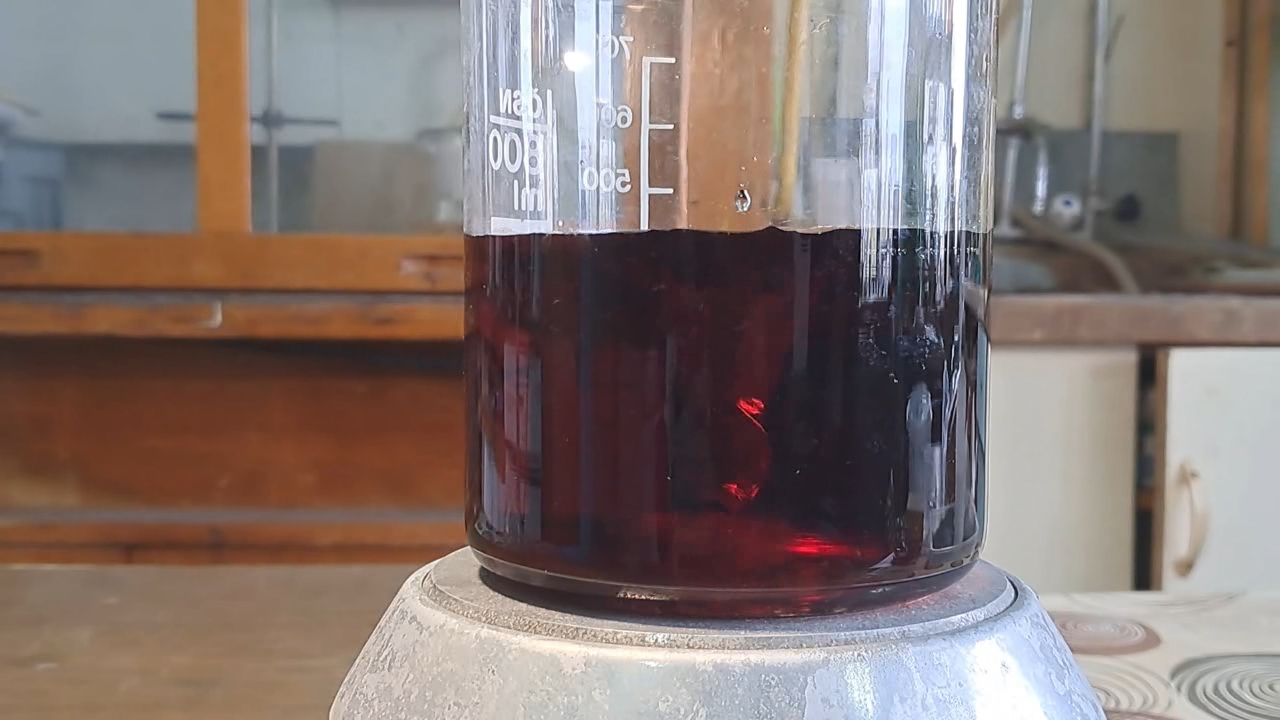
|
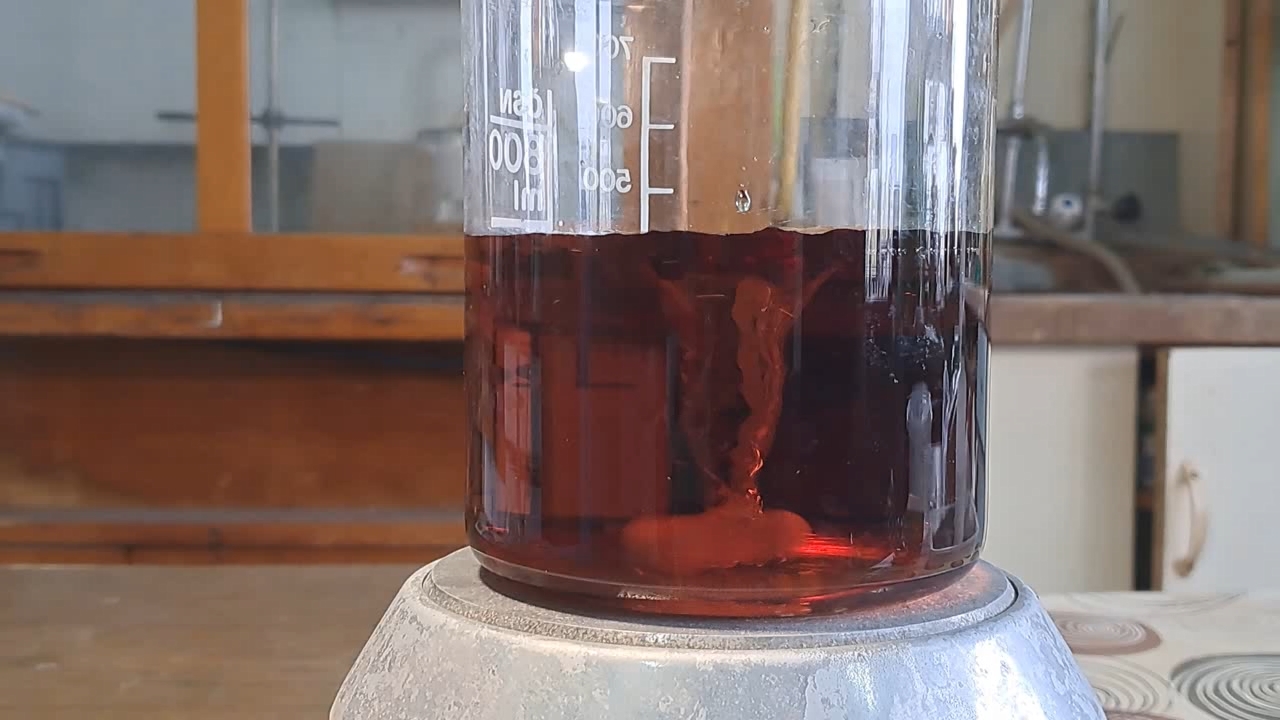
|
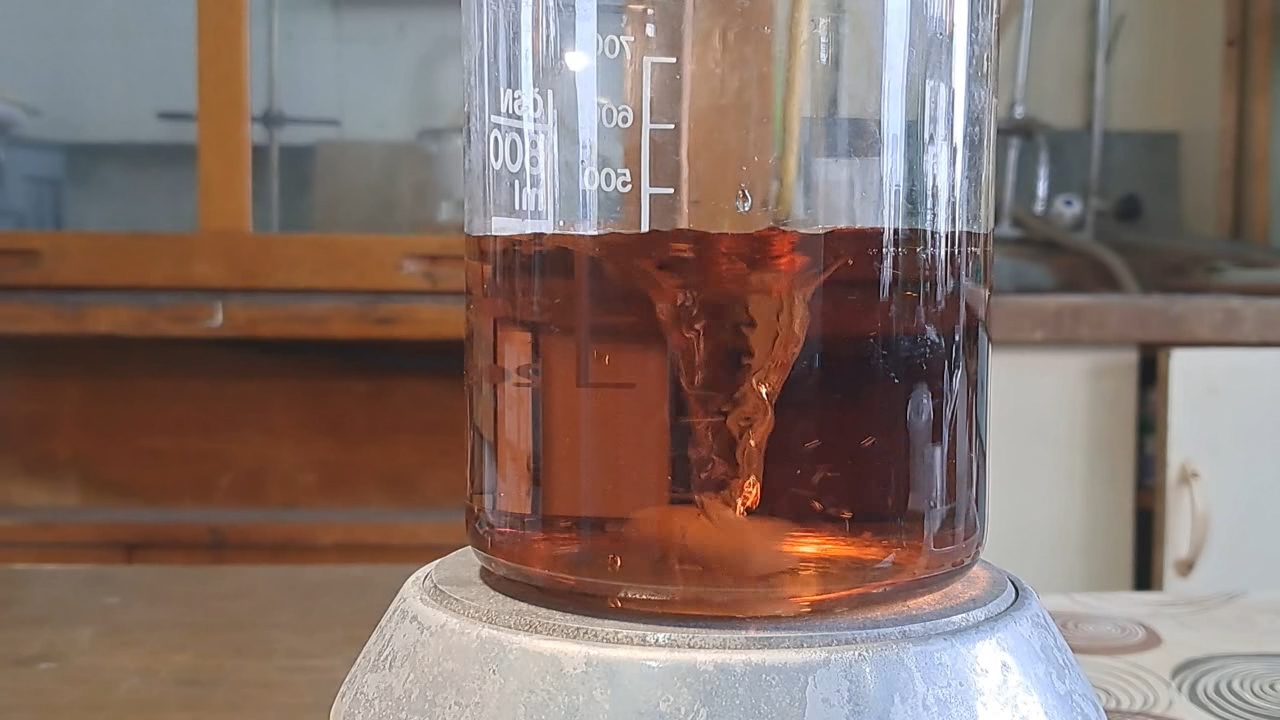
|
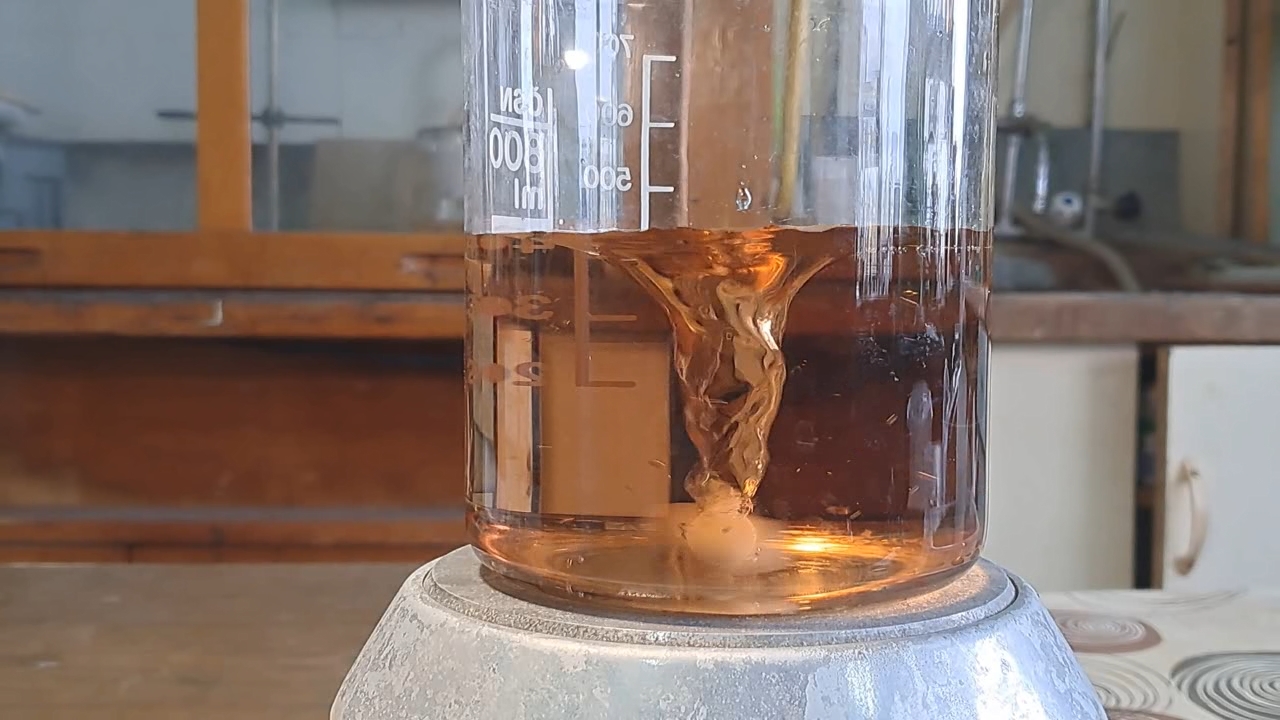
|
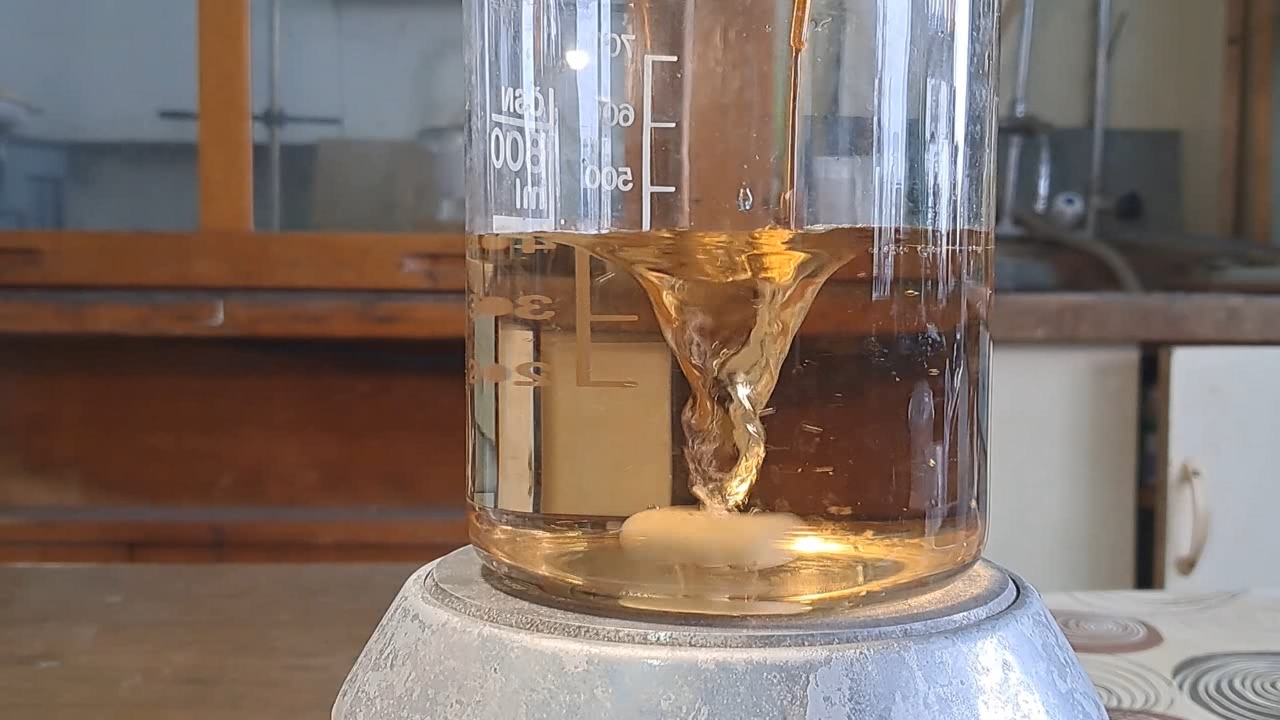
|
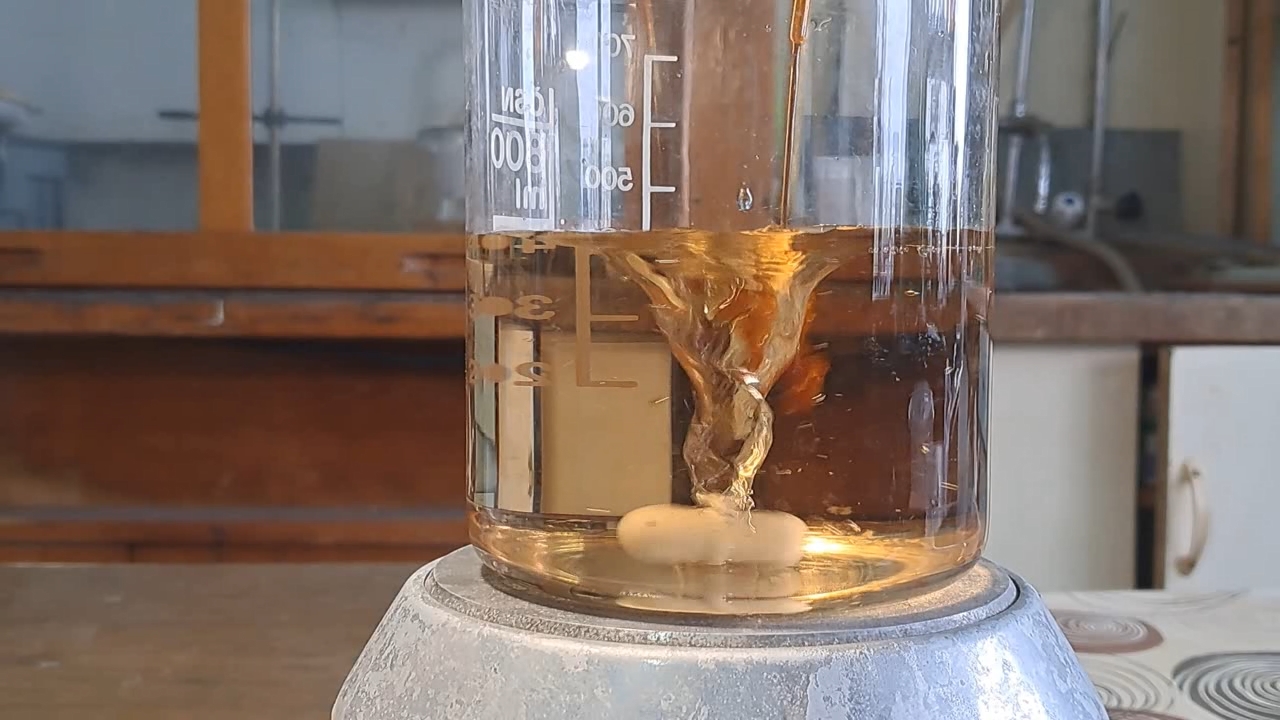
|
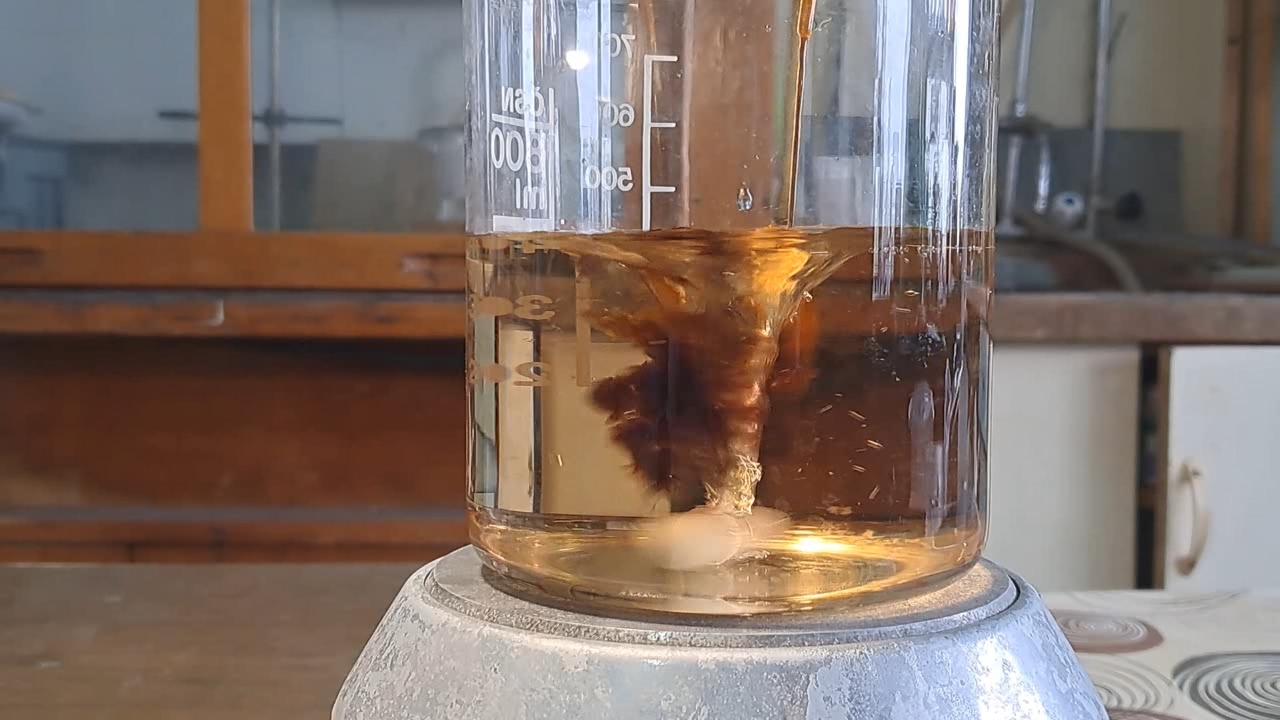
|
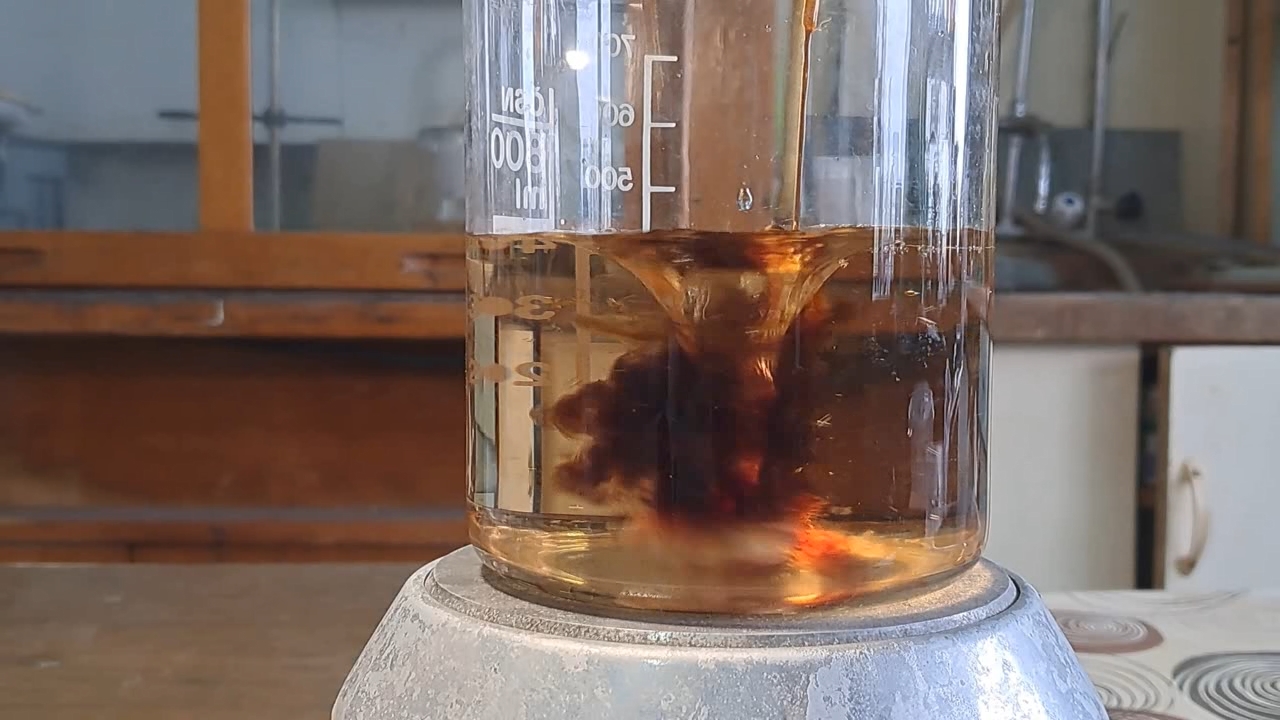
|
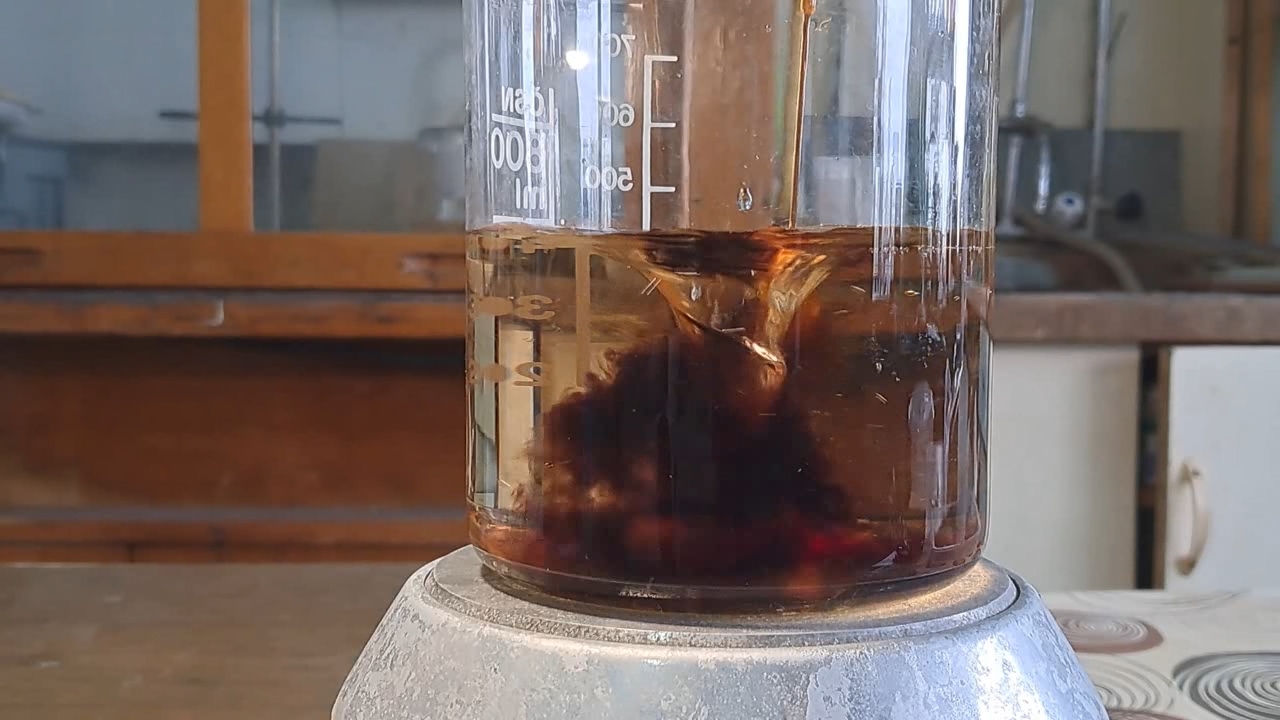
|
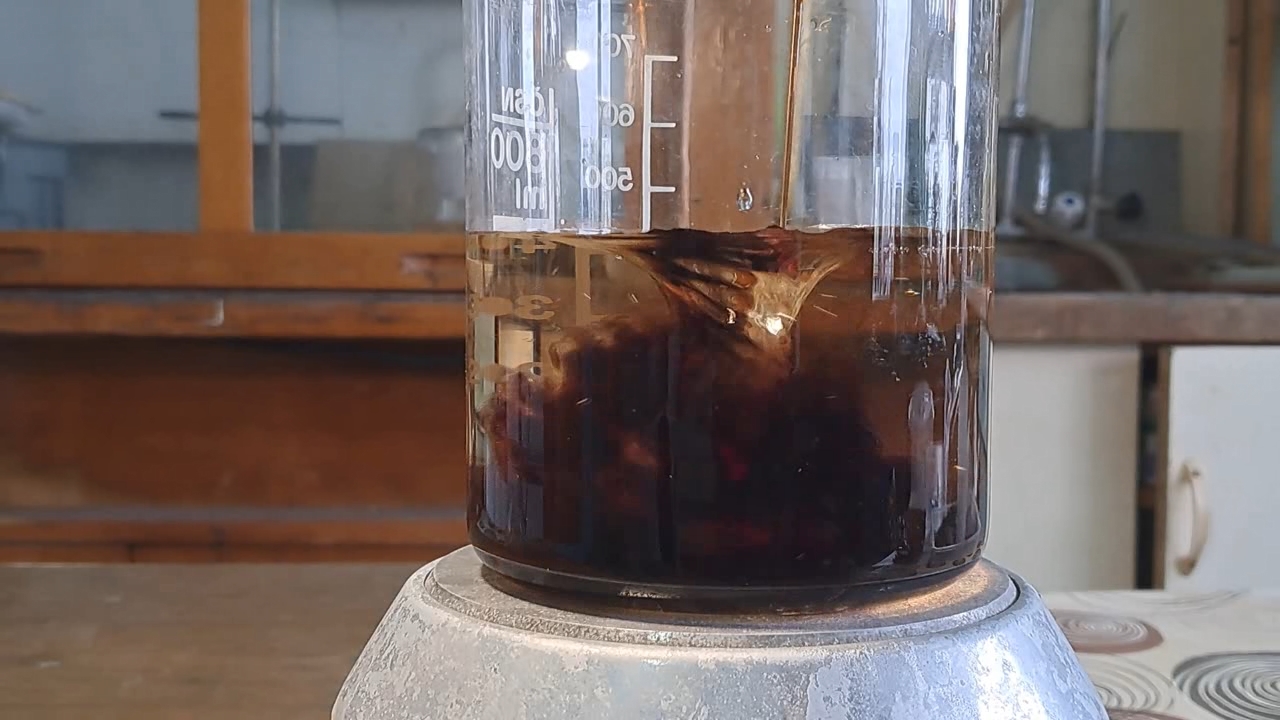
|
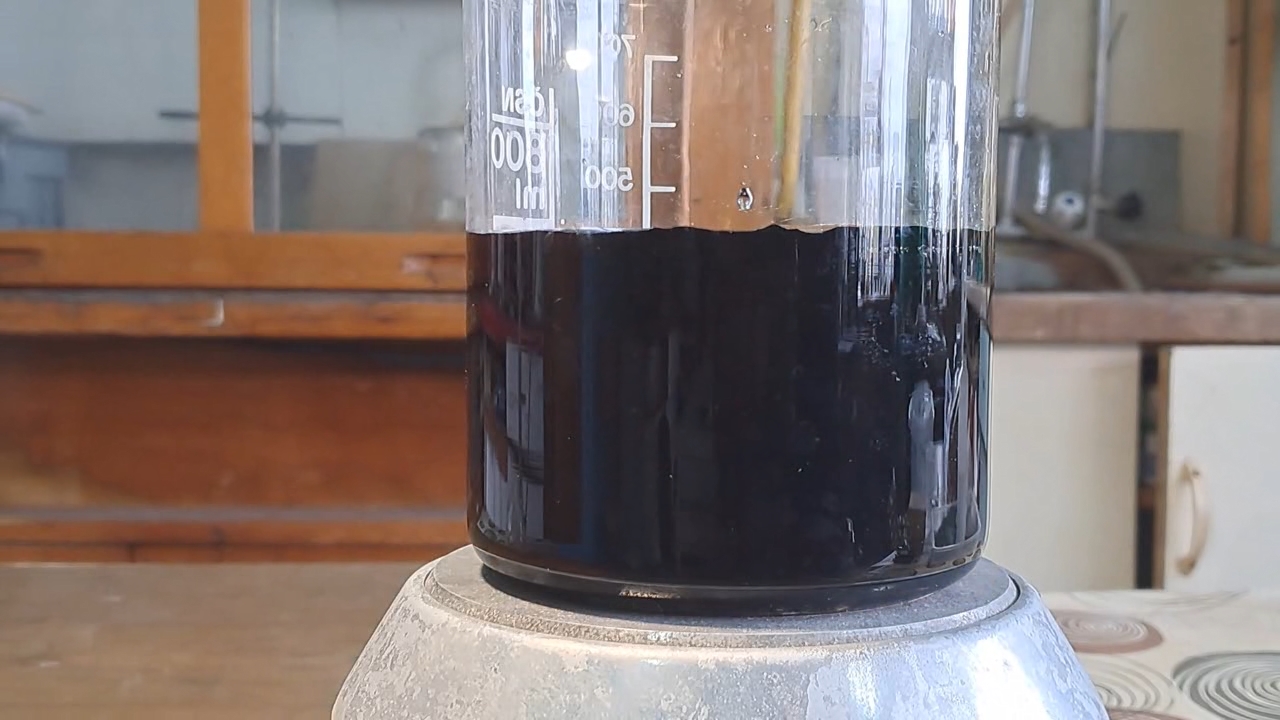
|
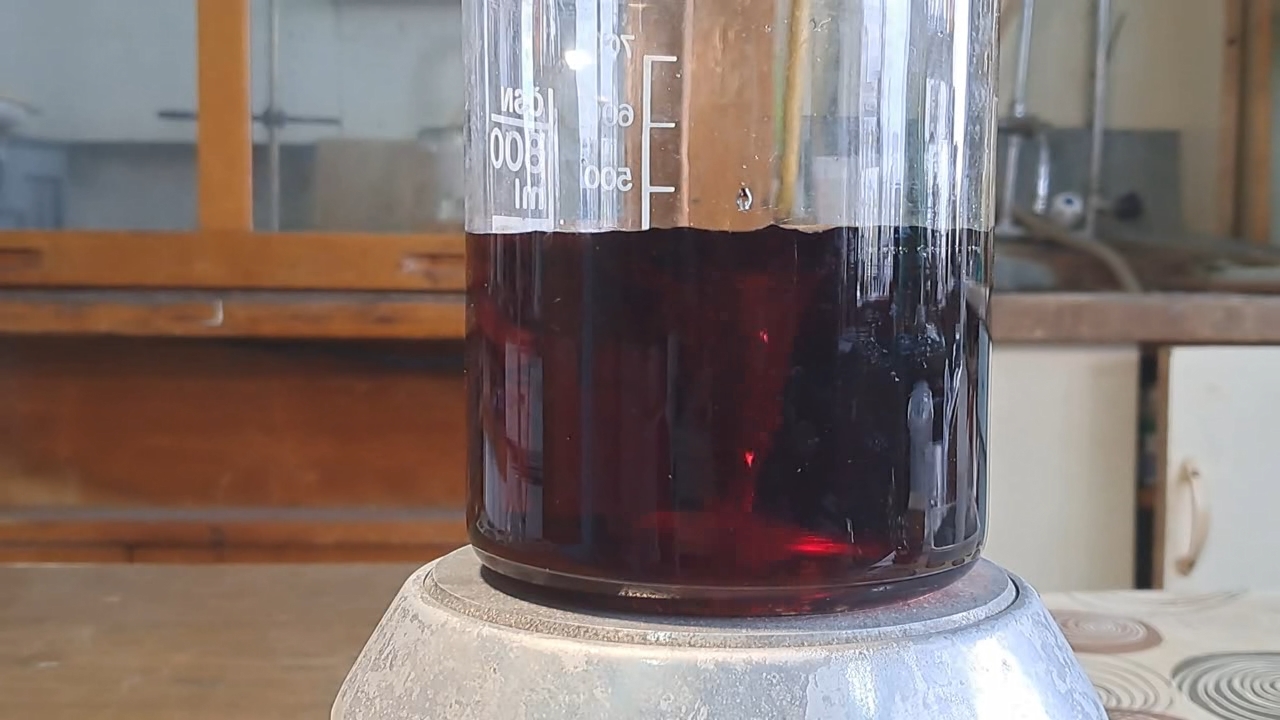
|
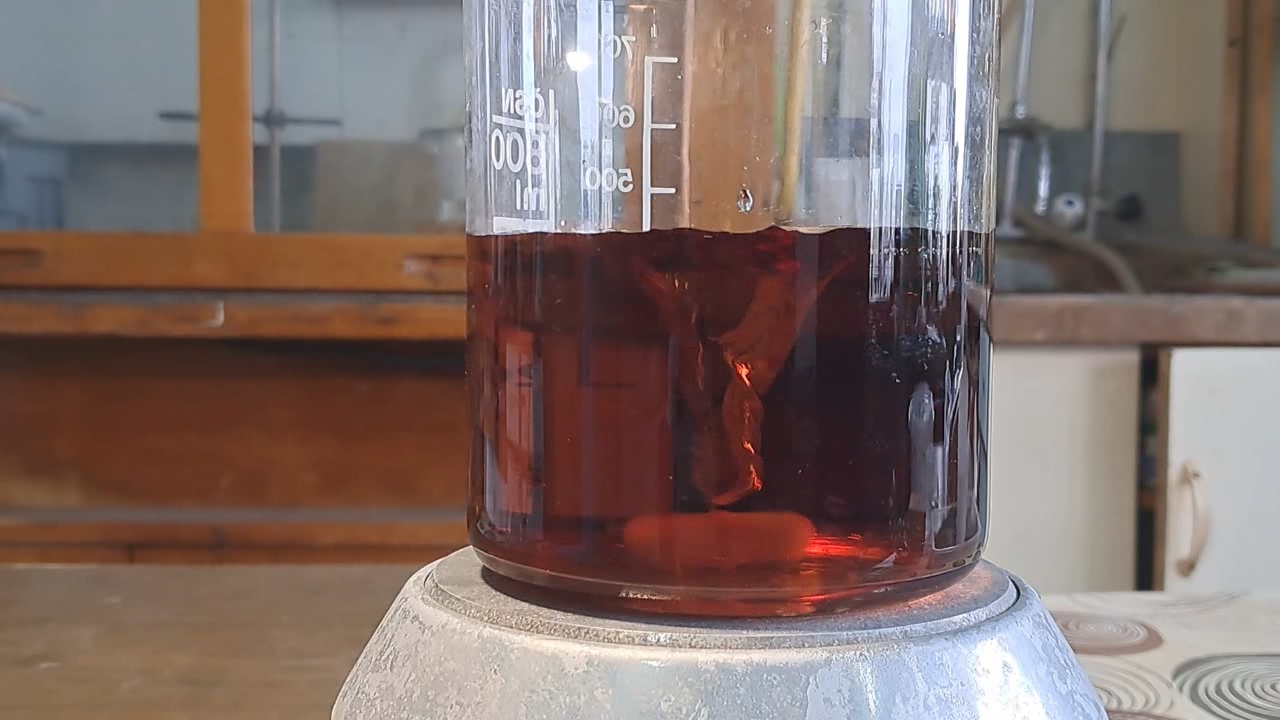
|
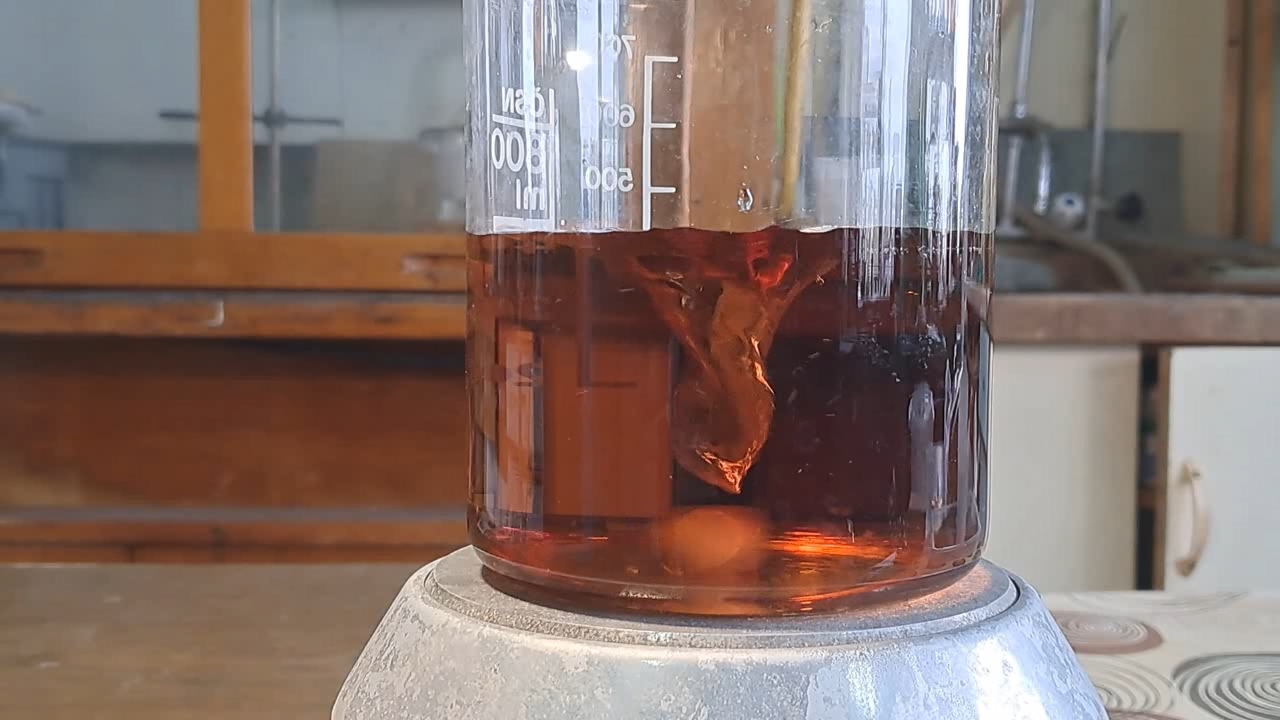
|
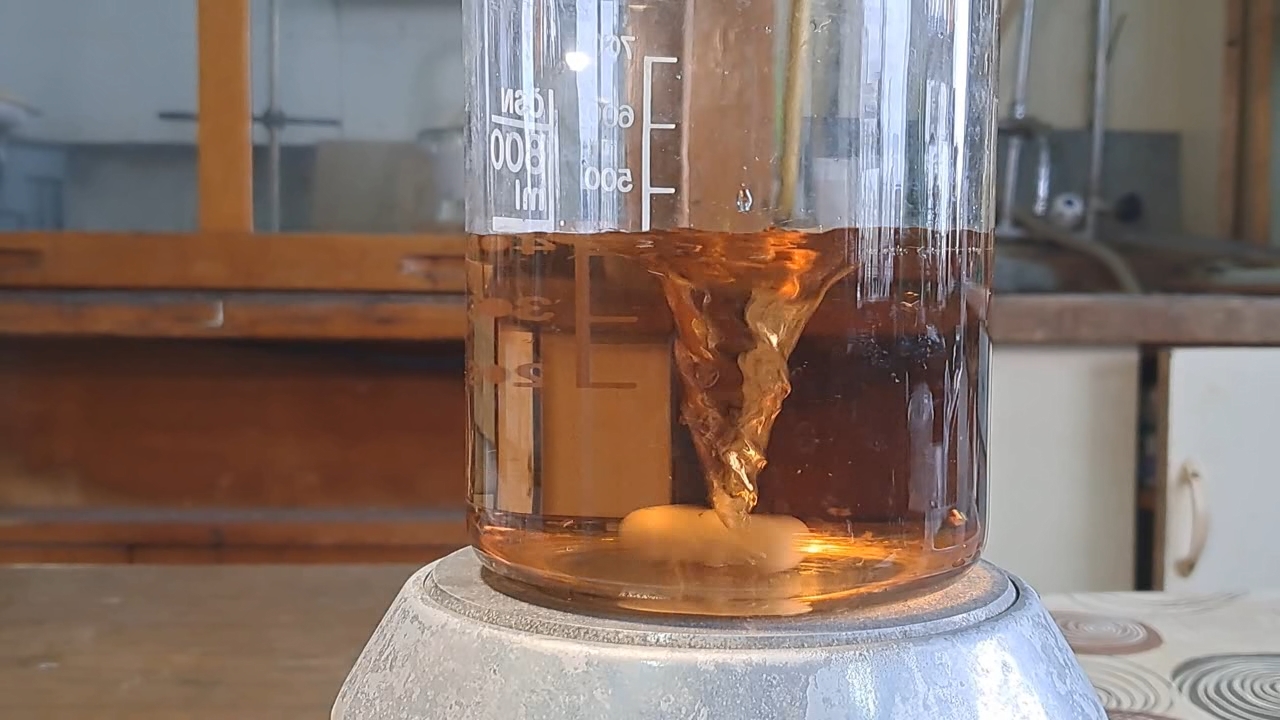
|
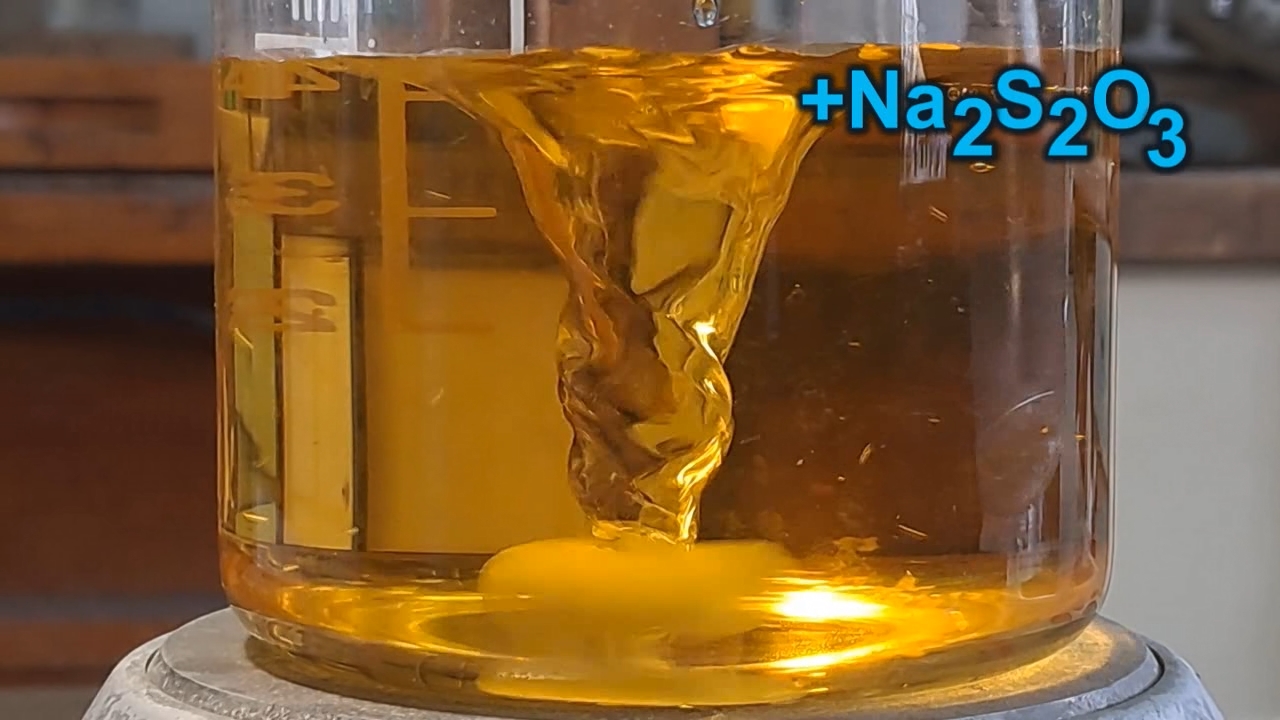
Inverse Reagents Addition Order |
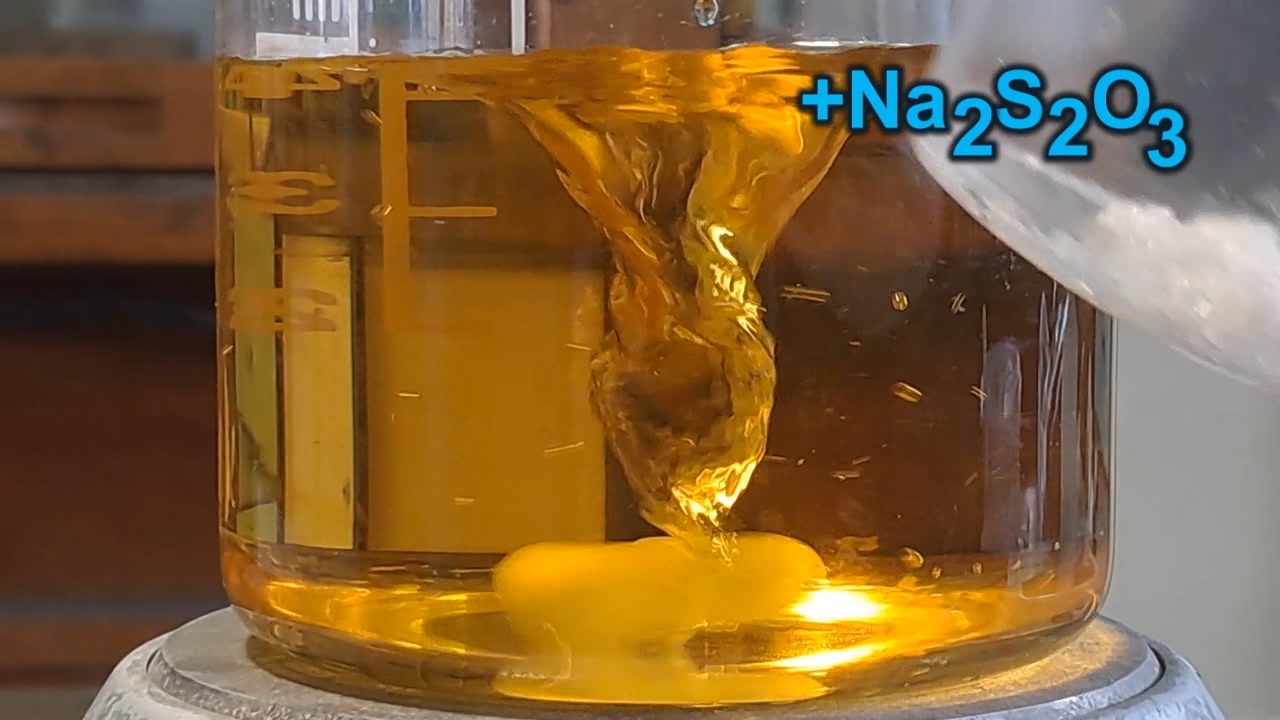
|
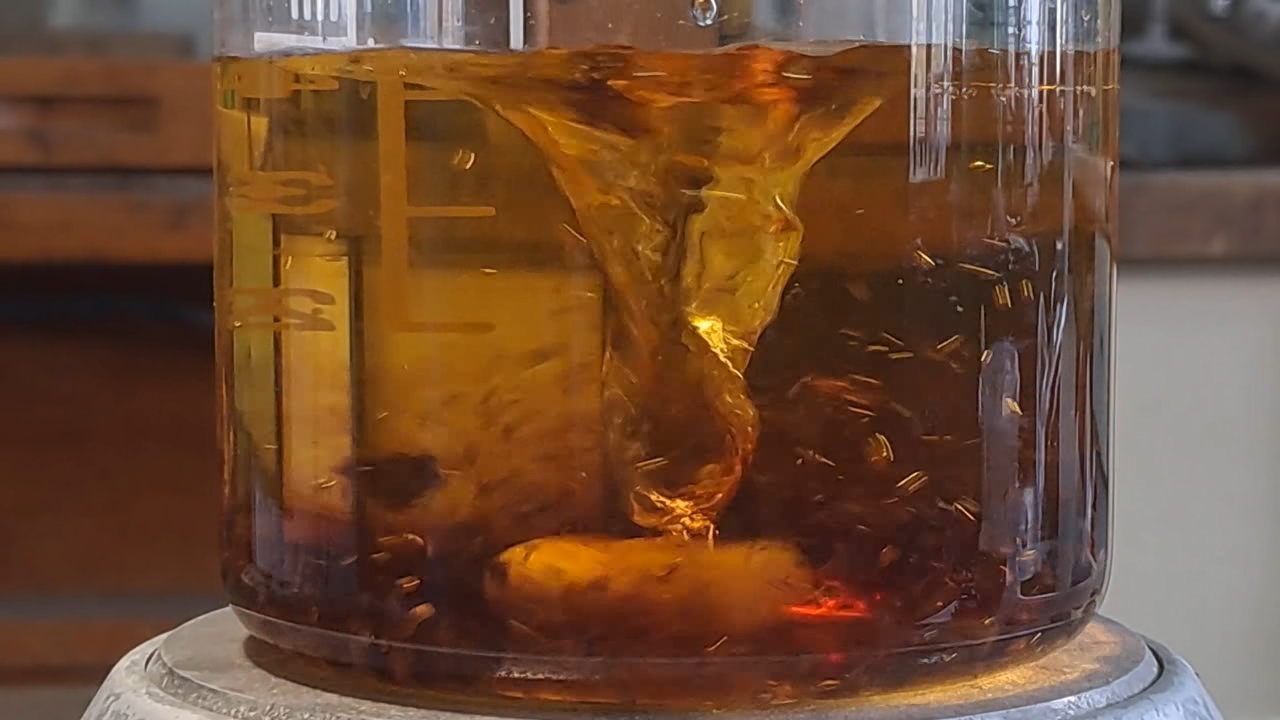
|
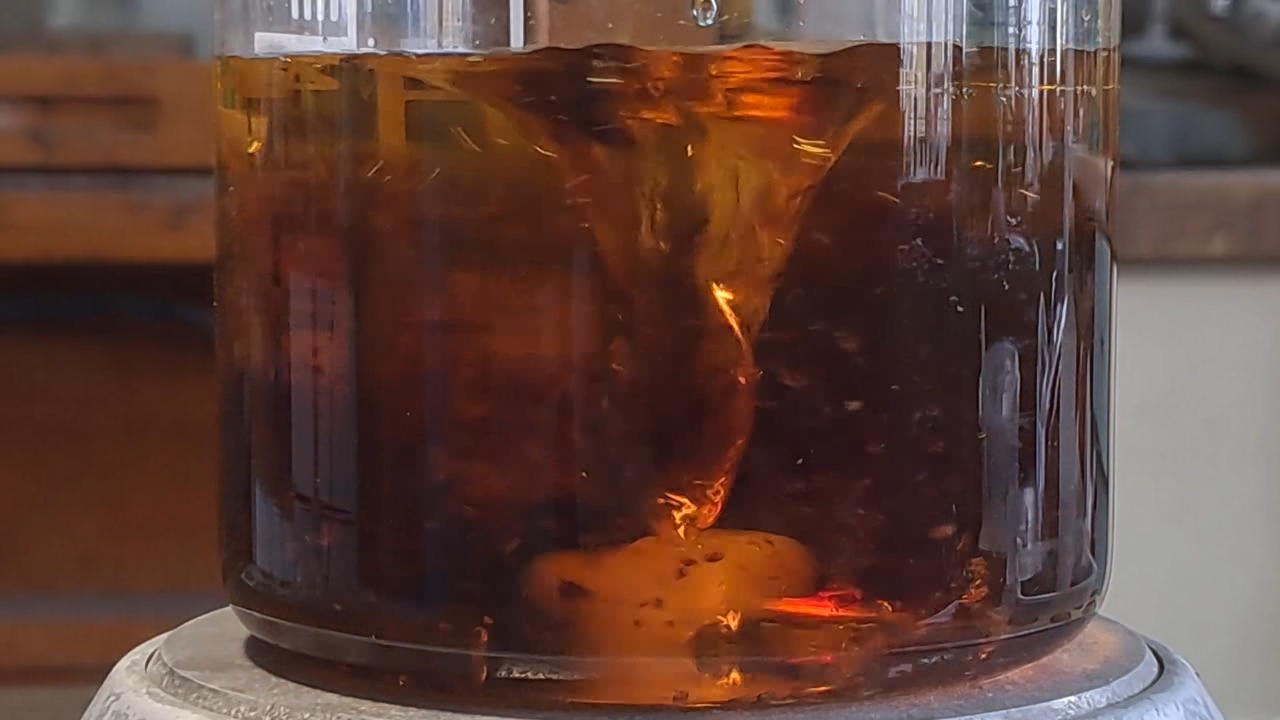
|
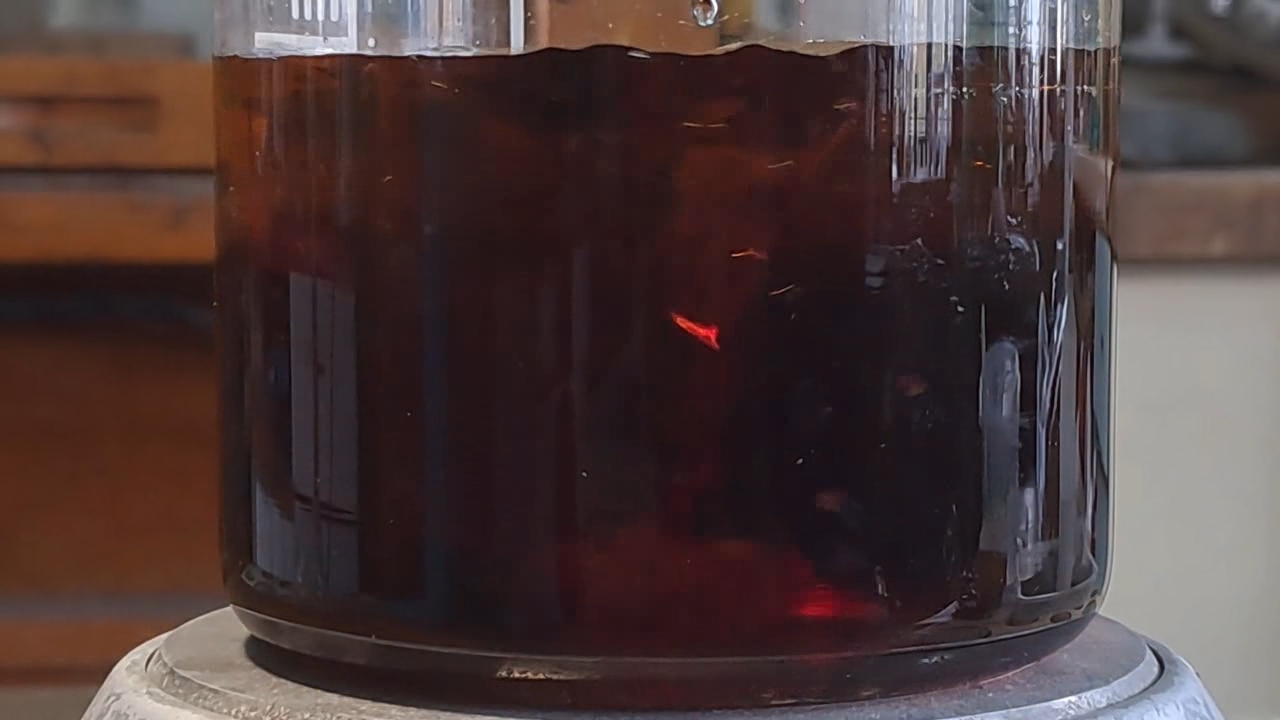
|
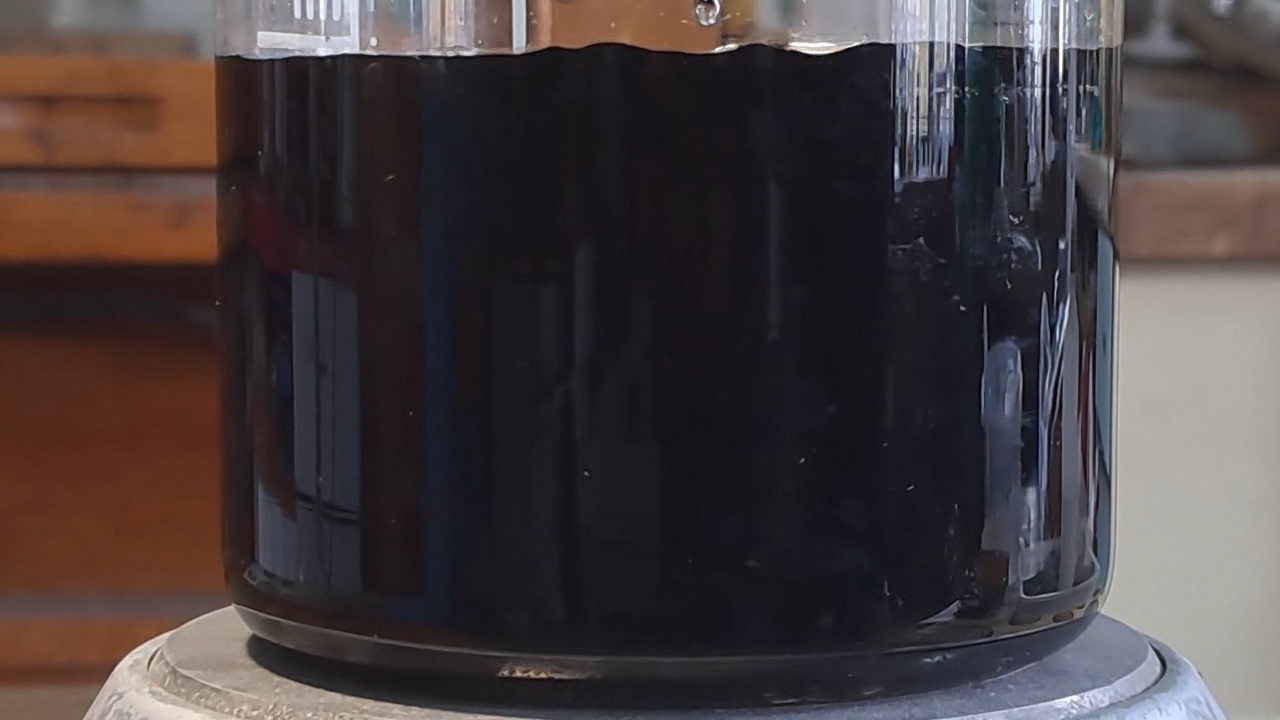
|
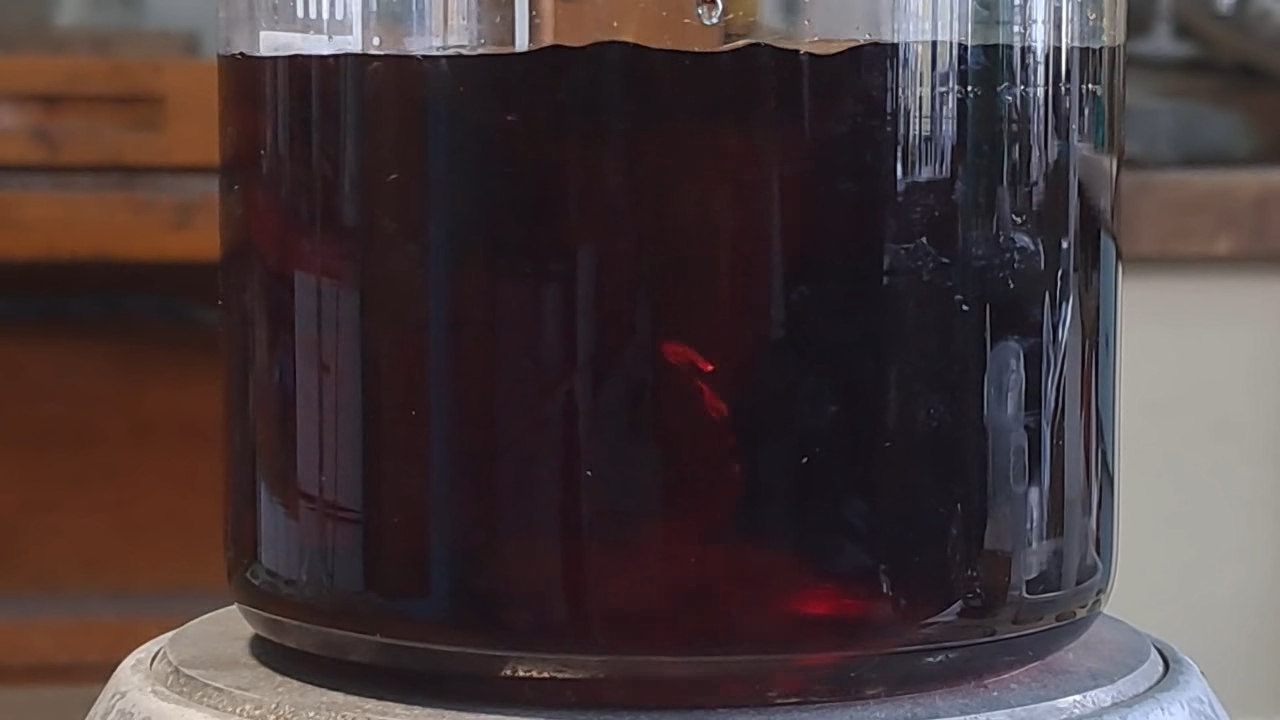
|
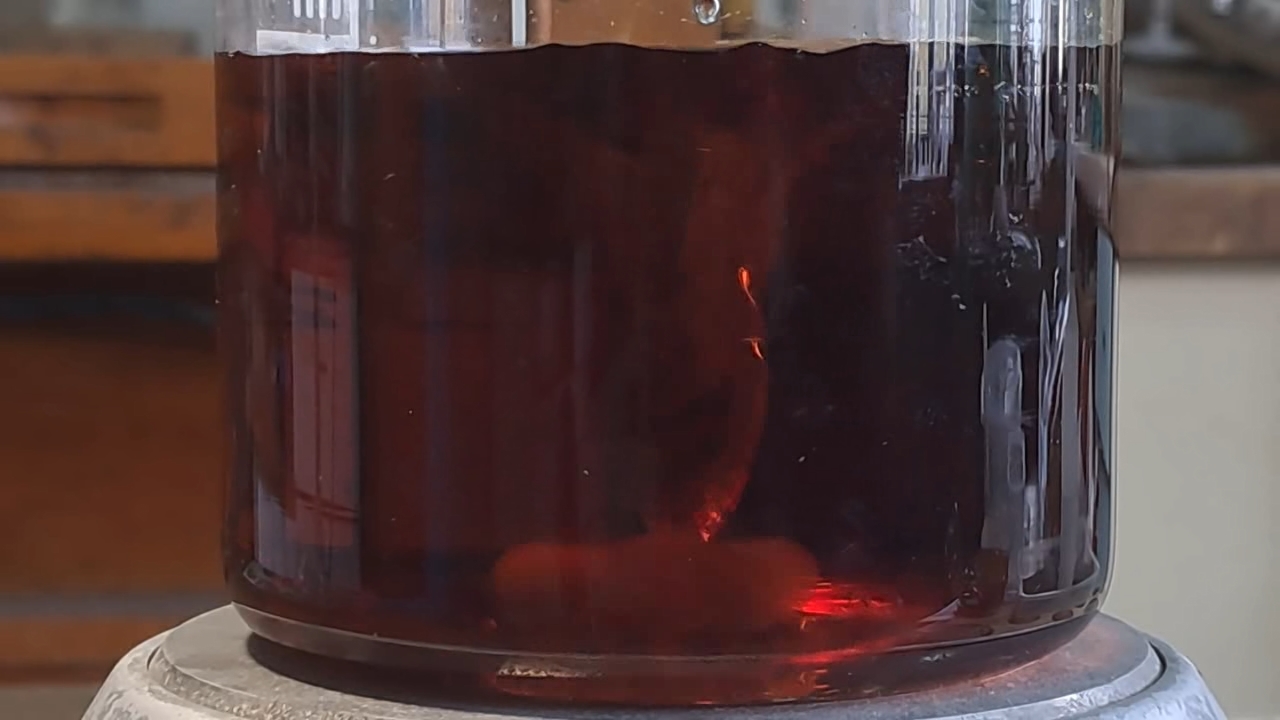
|
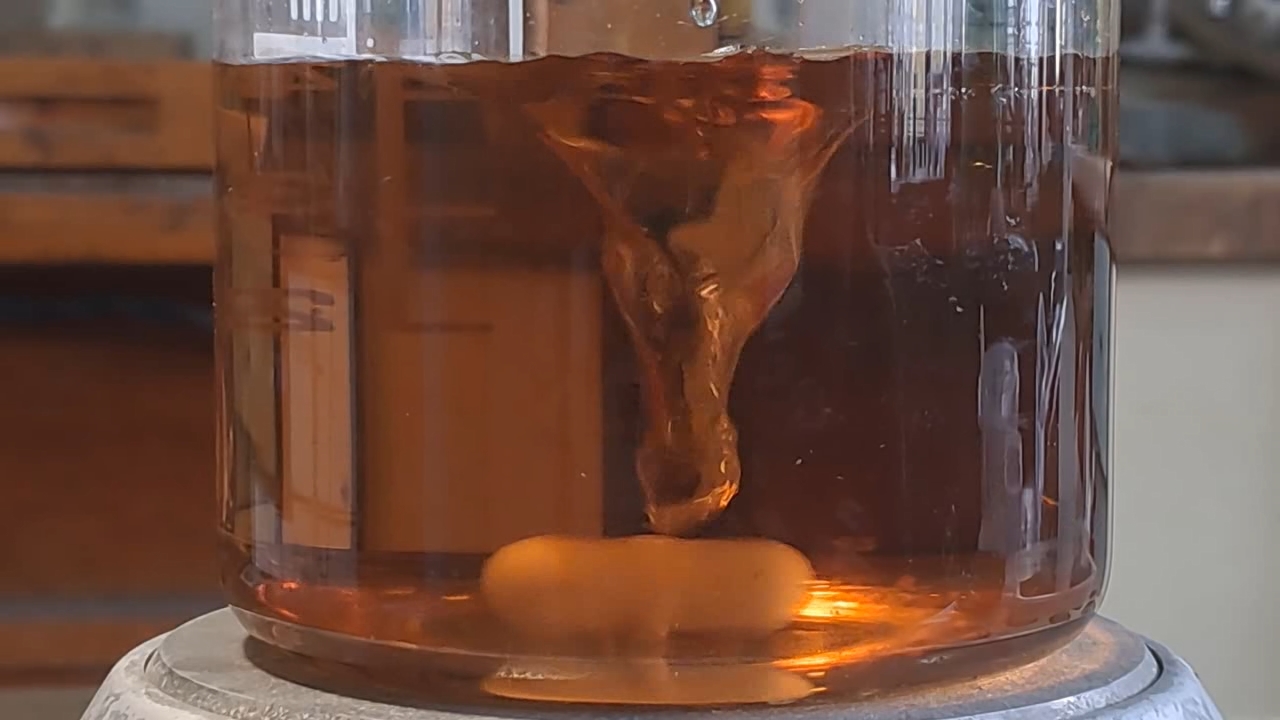
|
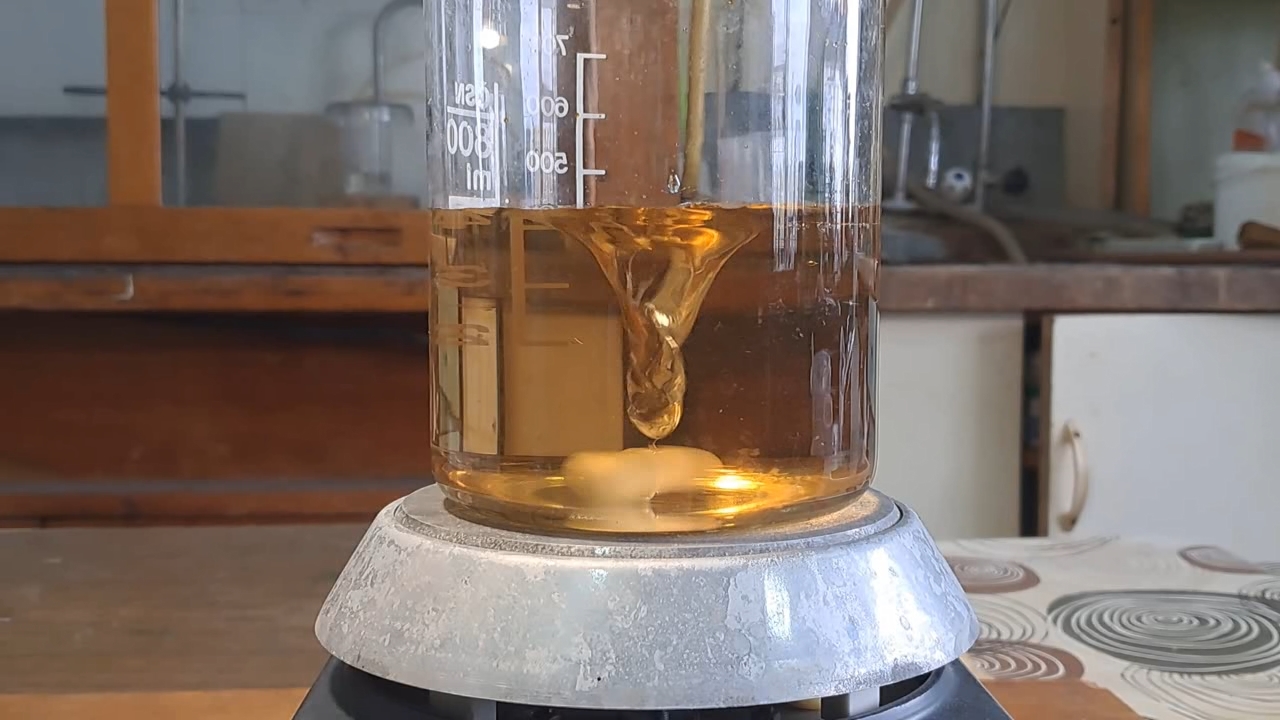
|
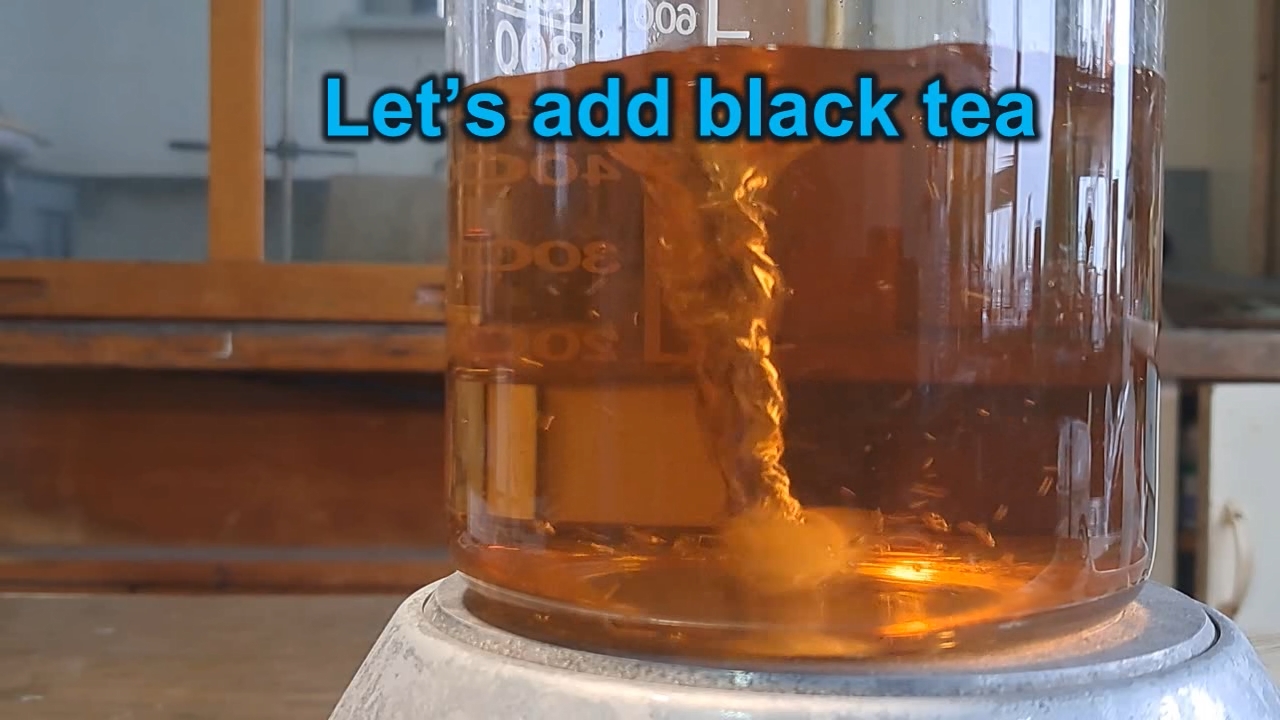
|
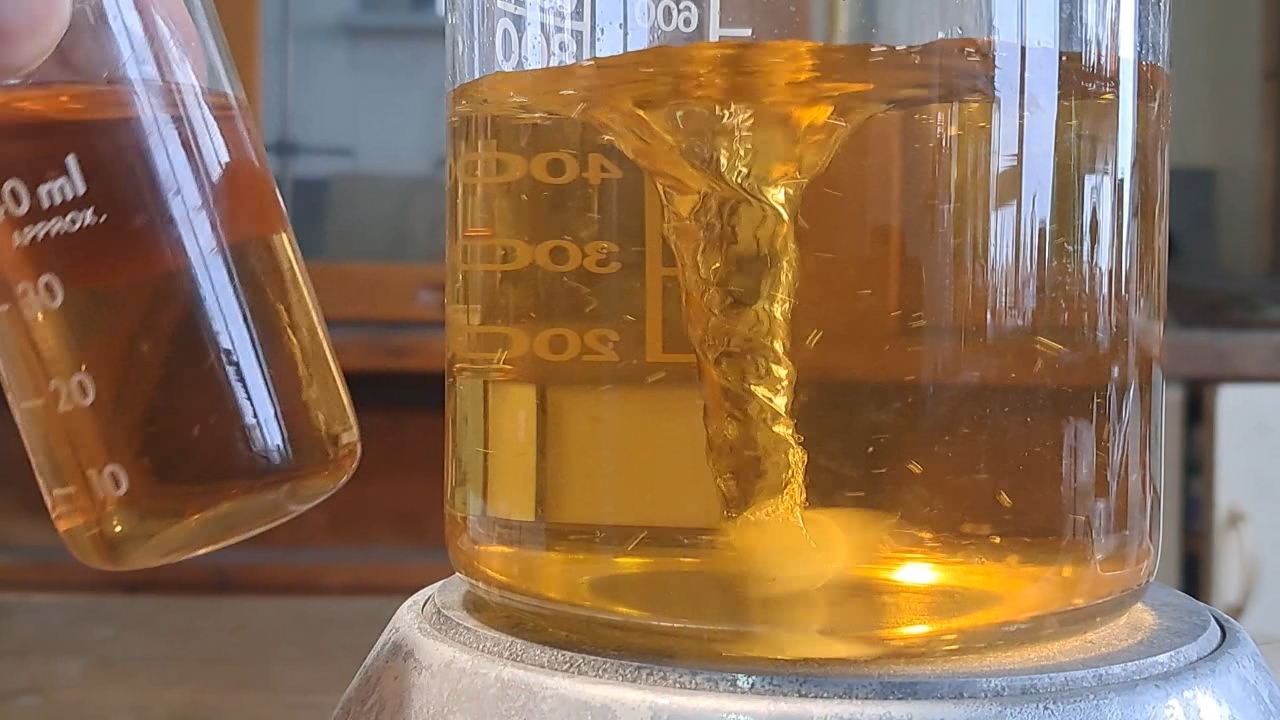
Let's add black tea |
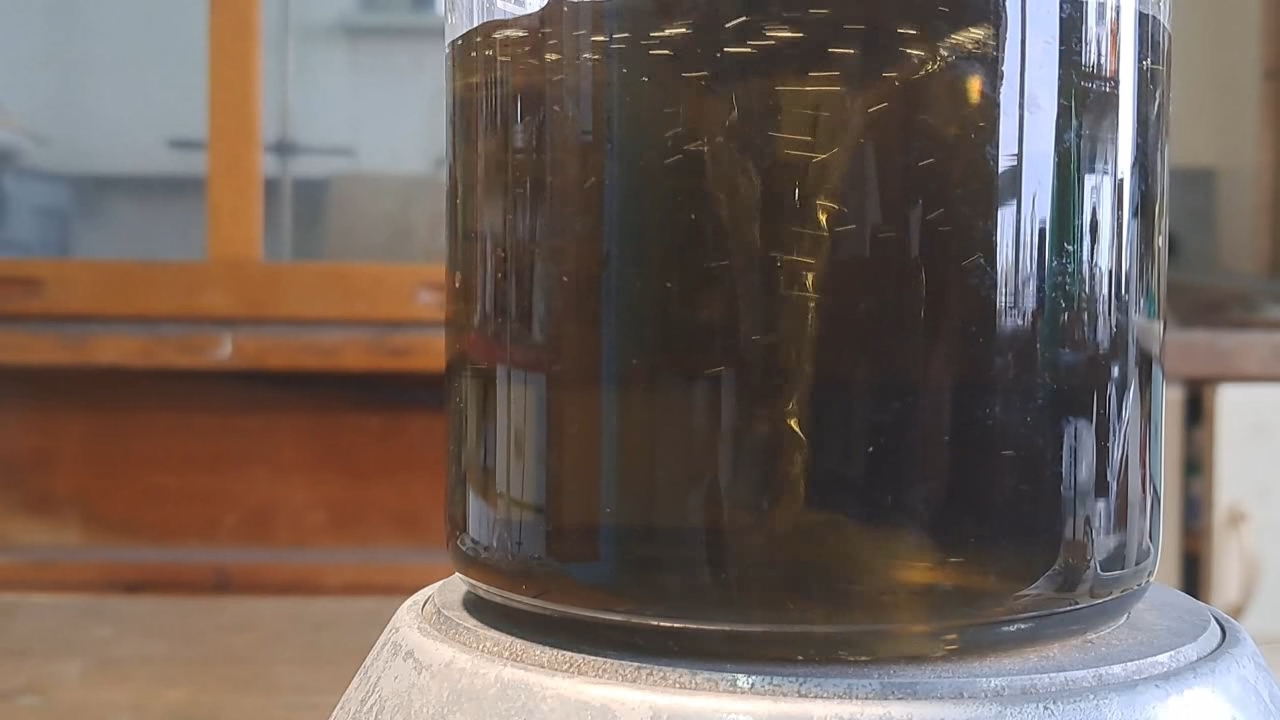
|